Creating a zen living room transforms your home into a peaceful sanctuary where stress melts away and tranquility flourishes. Rooted in Japanese design principles and influenced by Zen philosophy, these spaces evoke harmony, mindfulness, and a profound connection to nature. By embracing simplicity, natural elements, and thoughtful design choices, you can craft a serene retreat that promotes relaxation and well-being in your daily life.
1. Minimalist Zen Living Room with Essential Furniture Only
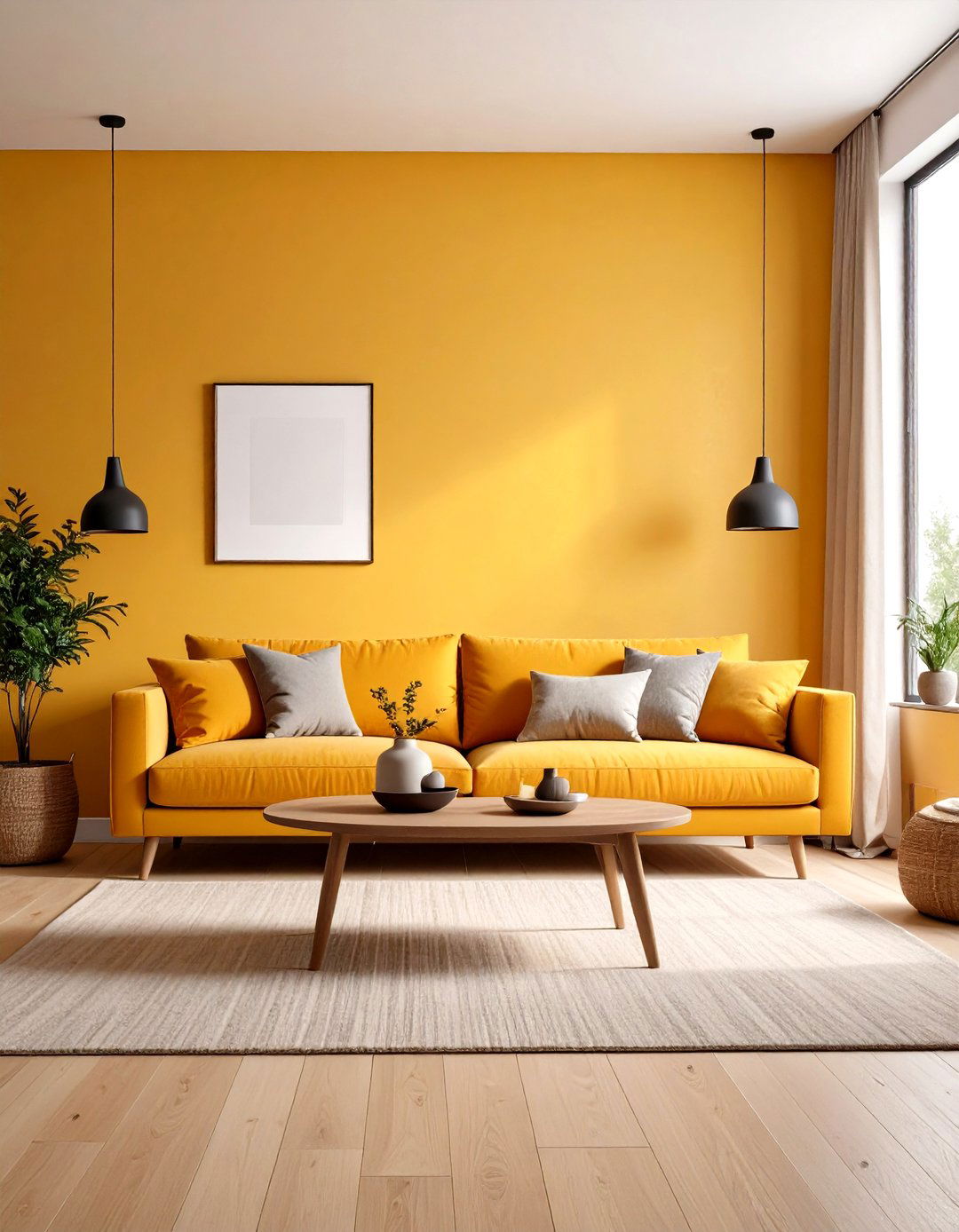
Minimalism forms the heart of zen design, focusing on keeping your living room clutter-free by including only essential furniture and decor items. Choose pieces with clean lines and simple shapes to create a spacious, airy atmosphere that allows your mind to relax completely. Select a low-profile sofa in neutral tones, paired with a simple wooden coffee table that serves both functional and aesthetic purposes. Incorporate built-in storage solutions or minimalist shelving to keep belongings organized and out of sight. Remember that less is more – every item should have a purpose and contribute to the overall harmony and balance of the room. This approach encourages intentional living while creating an open, uncluttered space that reflects zen principles perfectly.
2. Natural Bamboo Zen Living Room with Sustainable Elements

Incorporating bamboo in furniture and decor provides a sustainable and aesthetically pleasing way to embrace zen living room ideas, with bamboo's natural texture and light color palette promoting calm. Install bamboo flooring or area rugs to create an organic foundation, then add bamboo furniture pieces like chairs, coffee tables, and decorative screens. Bamboo chairs, shelves, and decorative screens can define the space while maintaining an airy, open feel. Consider bamboo window treatments that filter natural light softly while maintaining privacy. The material's rapid growth and sustainability align with zen principles of environmental harmony. The use of bamboo also reflects the Zen principle of living in harmony with nature, enhancing the room's tranquil atmosphere. Complete the look with bamboo accessories like picture frames, planters, and lighting fixtures.
3. Neutral Color Palette Zen Living Room with Earthy Tones
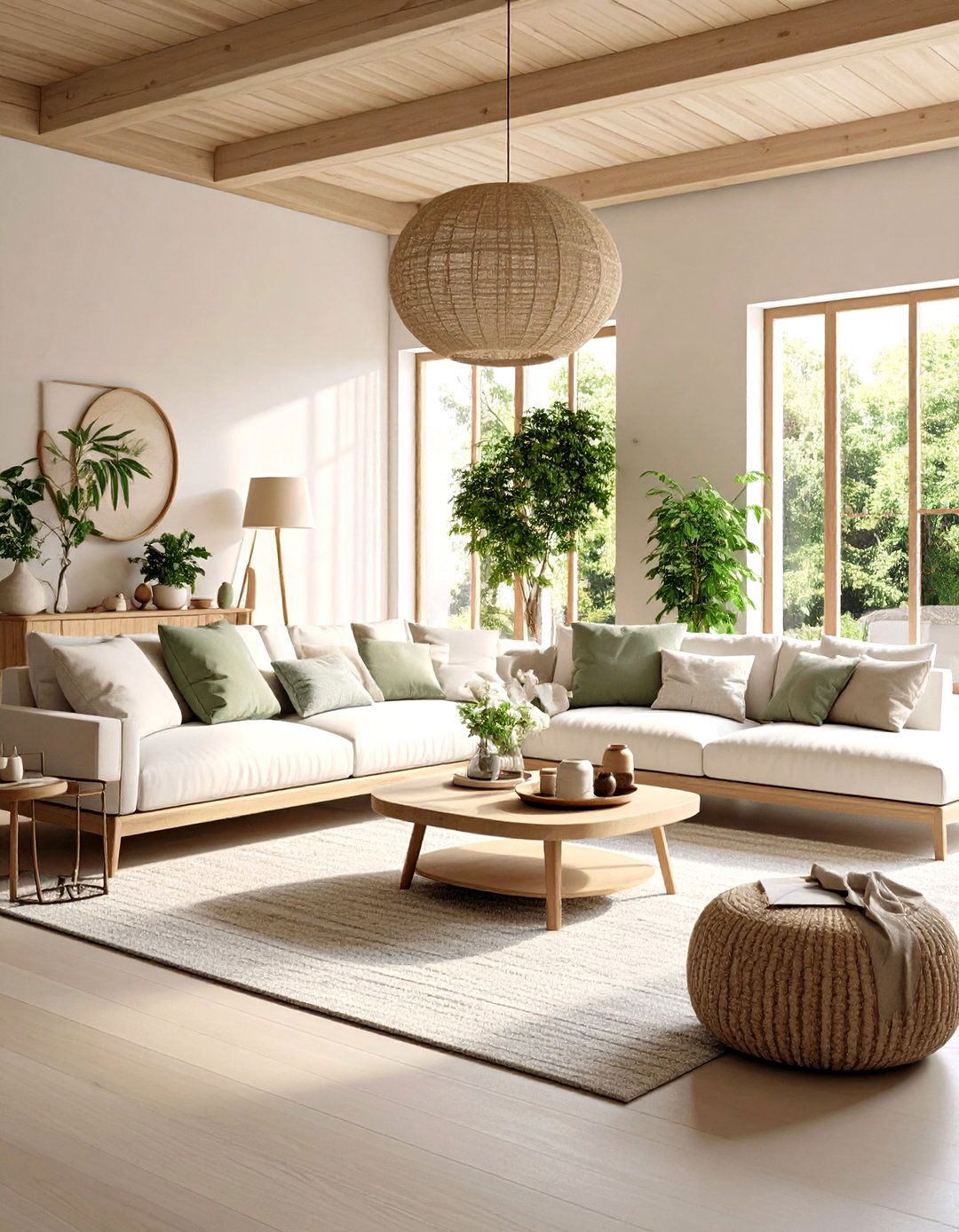
Soft, neutral colors such as beige, white, gray, and soft greens are key to creating a zen living room, fostering a soothing and harmonious environment perfect for relaxation. Apply these calming hues to walls, furniture, and decor to establish a cohesive foundation that promotes peace. Beige and white walls can serve as a serene backdrop, while gray and soft green accents add subtle depth and interest. Layer different textures in similar tones through throw pillows, area rugs, and window treatments to create visual interest without overwhelming the space. A sense of zen-inspired harmony with nature is represented by neutral tones like beige, white, grey, and mellow greens. Include natural wood accents in warm honey or light oak finishes to add warmth while maintaining the peaceful atmosphere.
4. Water Feature Zen Living Room with Indoor Fountains
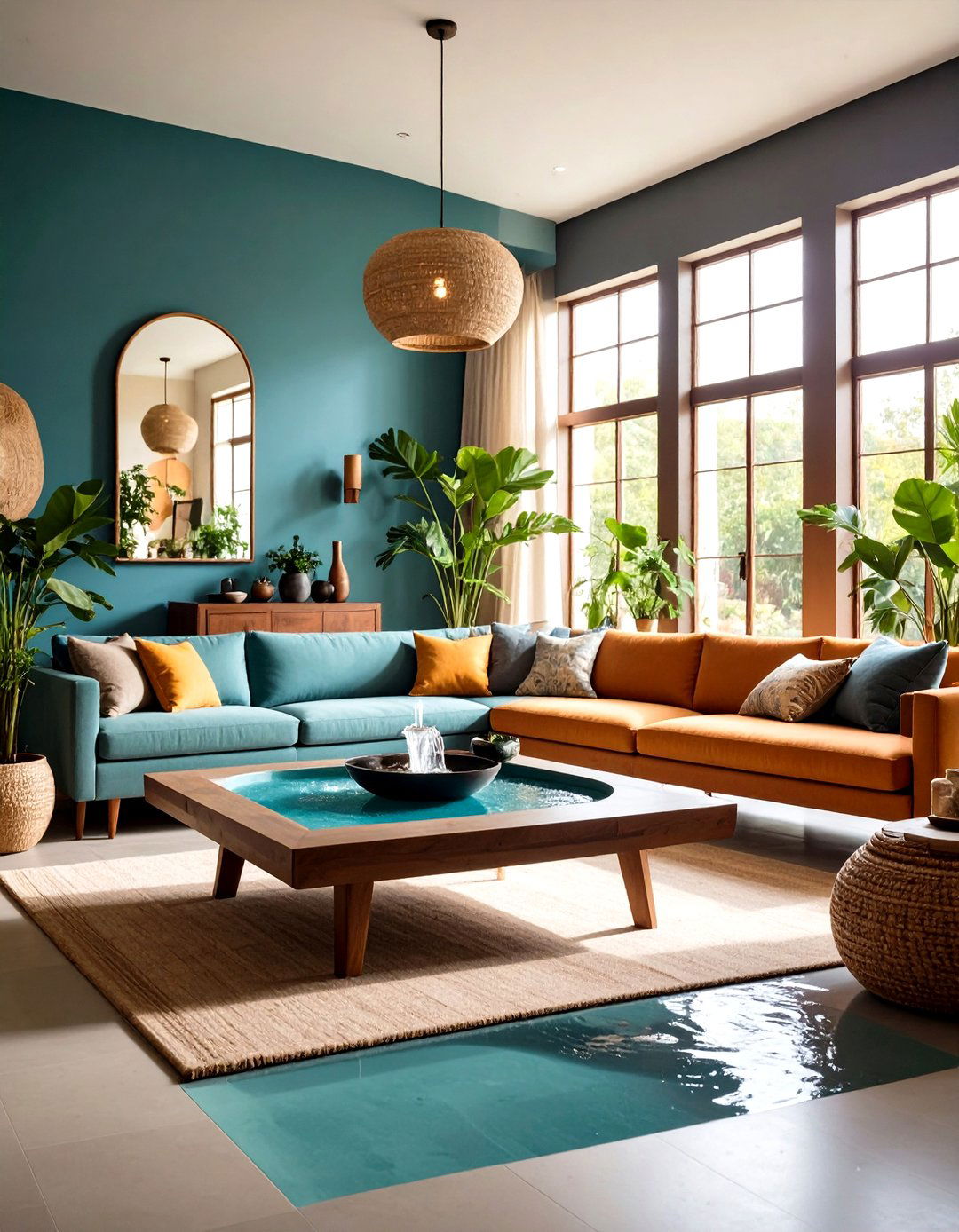
The gentle sound of flowing water is incredibly calming, helping to reduce stress and promote relaxation while enhancing the overall serenity of the space. Install a small tabletop fountain on your coffee table or side table, or consider a larger floor fountain as a striking focal point. A well-placed water feature can become a focal point, adding a touch of nature and movement to your living room. Choose fountains made from natural materials like stone, ceramic, or bamboo to maintain design consistency. The sound of trickling water masks distracting noises while creating a meditative atmosphere. Water features, such as indoor fountains or tabletop enhance the experience, creating serenity and reinforcing a zen decor theme. Position the fountain where its sound can be enjoyed throughout the room while ensuring easy access for maintenance.
5. Soft Lighting Zen Living Room with Ambient Illumination
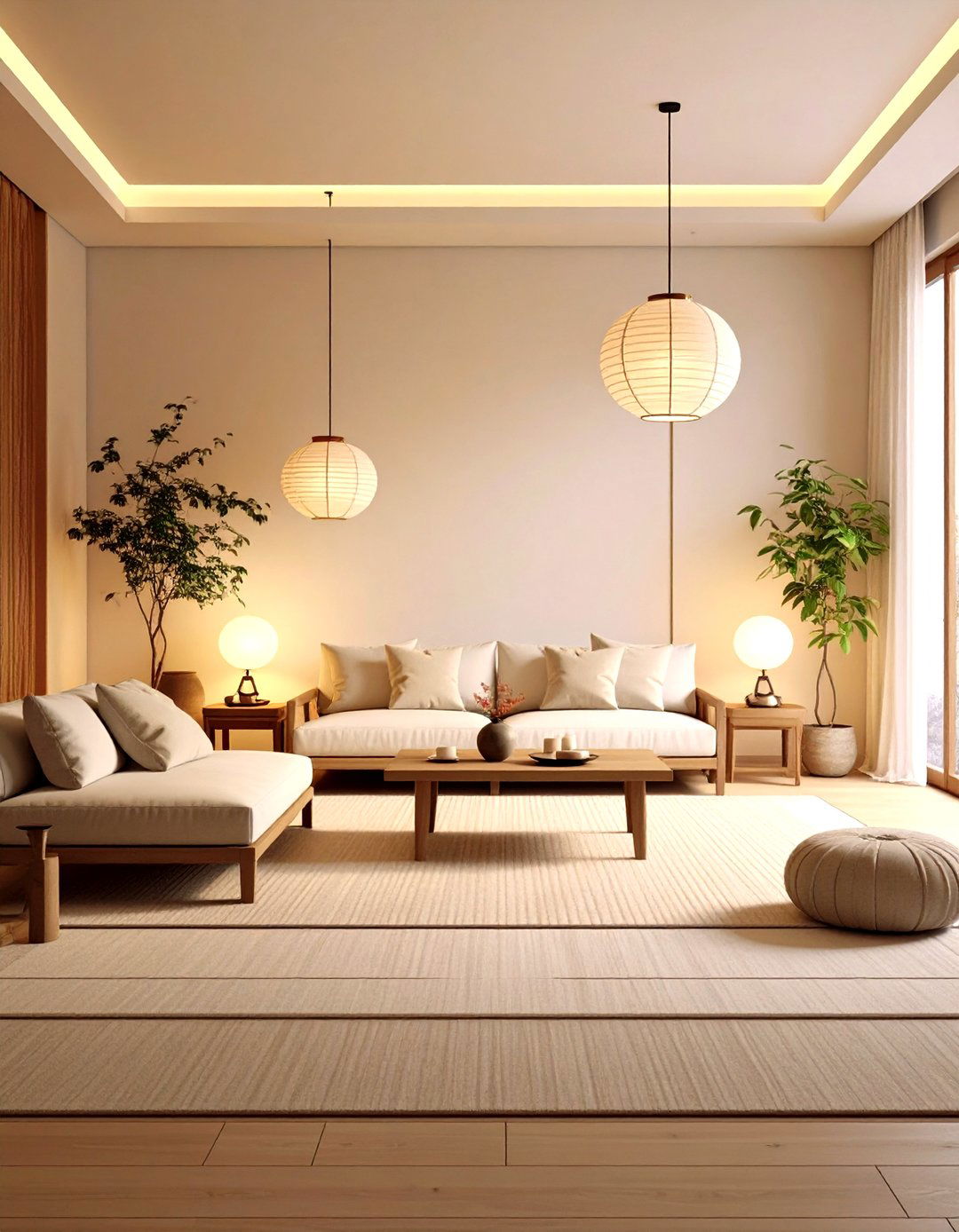
Lighting plays a crucial role in setting the mood of your living room, with soft, diffused lighting creating a warm and inviting atmosphere. Use a combination of floor lamps, table lamps, and candles to achieve a gentle, ambient glow that enhances relaxation. Replace harsh overhead lighting with dimmable fixtures and incorporate lampshades that diffuse light softly throughout the space. Natural light is proven to have several positive impacts on your health such as improved sleep and decreased seasonal depression, with sunlight having the perfect amount of brightness for zen meditation. Add paper lanterns for Japanese-inspired elegance, and include natural candles in calming scents like lavender or sandalwood. These lighting sources not only illuminate the space but also set the mood for relaxation and contemplation.
6. Indoor Plant Zen Living Room with Natural Greenery

Plants are an essential element of zen design, bringing life, freshness, and improved air quality to your living room while creating a tranquil and serene atmosphere. Choose easy-to-care-for plants like bamboo, bonsai trees, or peace lilies to enhance the peaceful vibe without adding stress. Position larger plants like fiddle leaf figs or monstera in corners to create natural focal points, while smaller plants can be displayed on shelves, windowsills, or plant stands near windows. For living rooms with plentiful natural light, add dimension and vibrant color to your design with a selection of hanging plants or plant stands near windows. Include plants with different textures and heights to create visual layers while maintaining the zen aesthetic. These plants not only beautify your space but also connect you to nature, promoting relaxation and well-being.
7. Low Floor Seating Zen Living Room with Japanese-Style Comfort
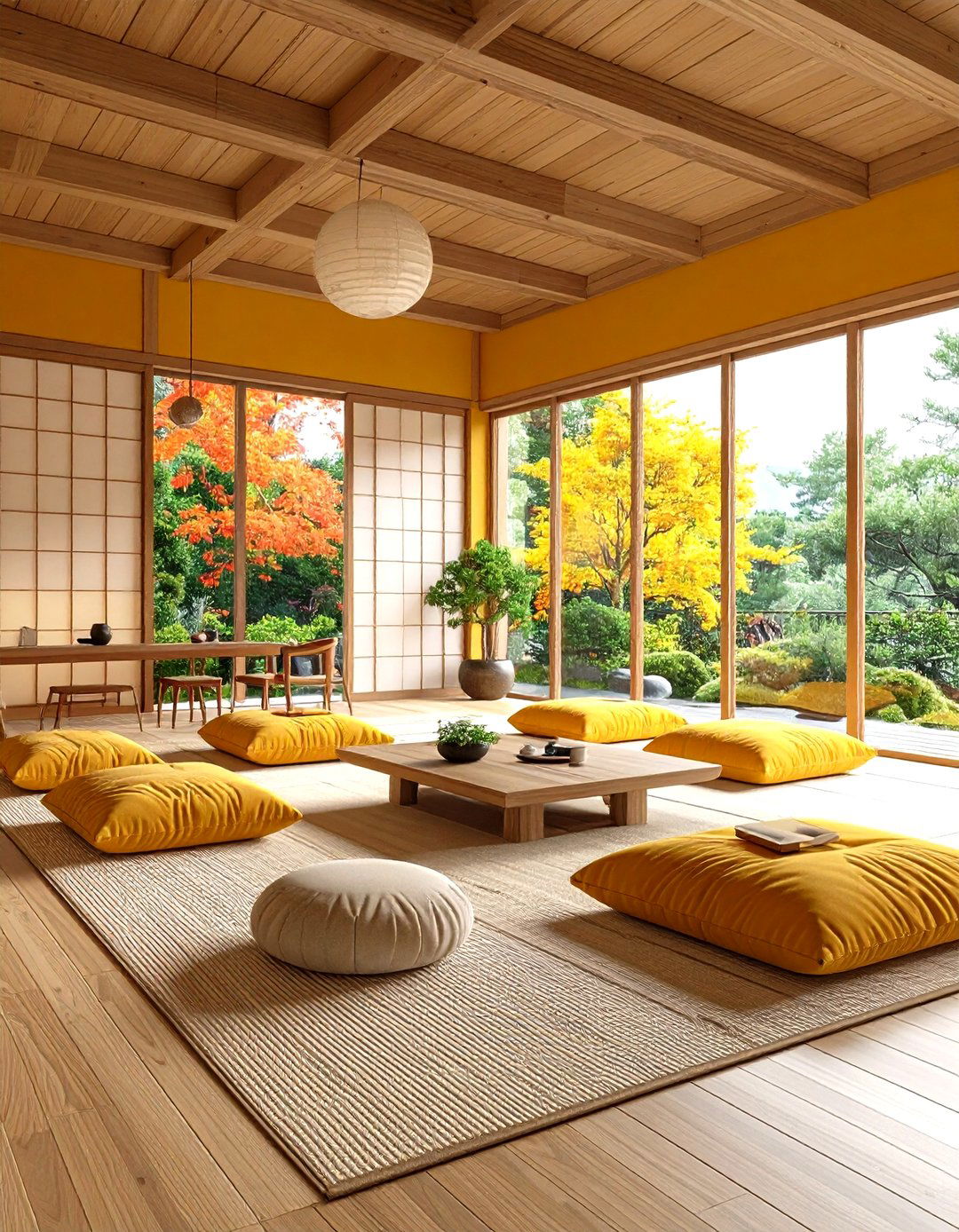
Low furniture, such as floor cushions, low sofas, and coffee tables, promotes a sense of groundedness and calm, reminiscent of traditional Japanese interiors where simplicity and connection to the earth are key elements. Create intimate seating arrangements using floor cushions in natural fabrics like linen or cotton, paired with low coffee tables for a authentic Japanese experience. Pair these elements with cushions or floor seating to enhance comfort, with the streamlined design complementing minimalist principles while ensuring a cohesive and calming ambiance. Add support with backrest cushions or low chairs without legs for extended comfort during meditation or socializing. Low furniture brings people closer to the ground, promoting a sense of calm and grounding while creating an open, spacious feel perfect for meditation or social gatherings. Include small side tables for tea service and reading materials.
8. Natural Wood Zen Living Room with Organic Warmth

Incorporate natural materials like wood, stone, and bamboo into your living room decor to connect your space to nature and enhance the calming atmosphere, with a wooden coffee table serving as a focal point. Choose furniture pieces in light, natural wood finishes like pine, oak, or maple to add warmth without overwhelming the space. Wood provides warmth, while natural materials align with zen design principles of simplicity and harmony, creating a serene atmosphere and promoting connection to the outdoors. Include wooden accent pieces such as picture frames, decorative bowls, and shelving units to create cohesion throughout the room. Employ natural tiles for flooring, authentic furnishings, and fabrics such as wood, stones, bamboo, and cotton to fill the space with an aura of authenticity and charm. The natural grain patterns and textures of wood add visual interest while maintaining the peaceful, organic feel essential to zen design.
9. Zen Garden Corner Living Room with Meditation Space

An indoor zen garden can add a touch of serenity and elegance to your living room, incorporating elements like sand, stones, and small plants to create a meditative focal point. Use elements like sand, stones, and small plants to craft a miniature landscape that promotes reflection and meditation, with the simplicity encouraging tranquility and focus. Create a dedicated corner with a wooden tray filled with fine sand or gravel, carefully arranged stones, and a small rake for creating patterns. Raking patterns in the sand can become a soothing and mindful practice, helping to clear your mind and reduce stress. Position this zen garden where it can be easily accessed for daily meditation or mindful moments. Placing your zen garden in a quiet corner allows you to retreat to a serene spot whenever you need a moment of peace.
10. Shoji Screen Zen Living Room with Traditional Room Dividers
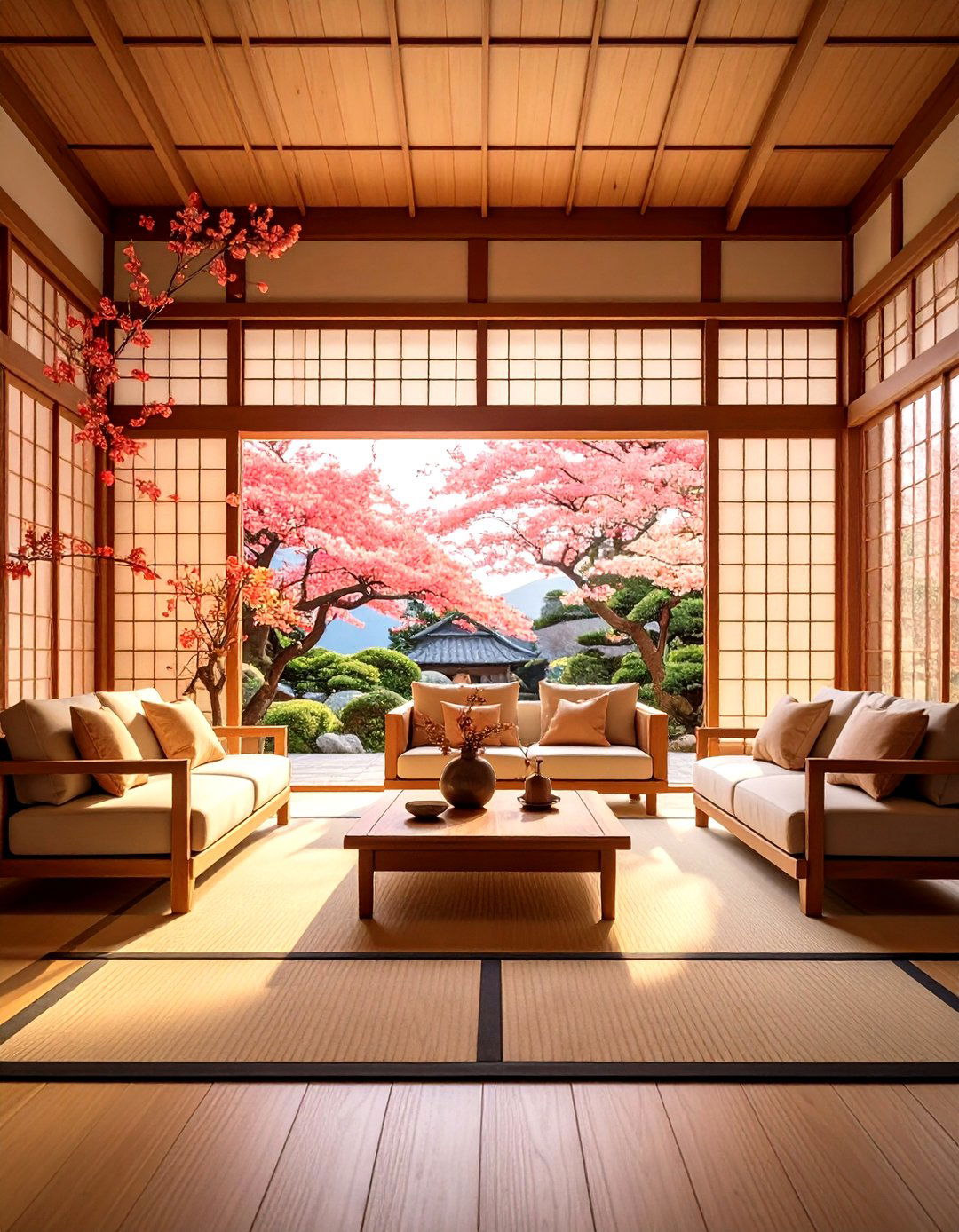
Sliding doors or screens can help create a flexible and adaptable living space, allowing you to easily section off areas for different activities while promoting order and calm. Shoji screens, traditional Japanese sliding doors made from wooden frames and translucent paper, allow light to filter through softly, creating a serene and diffused glow. Install these elegant screens as room dividers to separate living areas or as window coverings to maintain privacy while allowing natural light to flow through. Choose designs that complement the overall aesthetic of your living room, such as natural wood or frosted glass, to seamlessly integrate them into your decor. These elegant screens can serve as room dividers or window coverings, maintaining an open and airy feel in your space. The translucent quality creates beautiful shadow play throughout the day while maintaining the minimalist zen aesthetic.
11. Tatami Mat Zen Living Room with Traditional Japanese Flooring
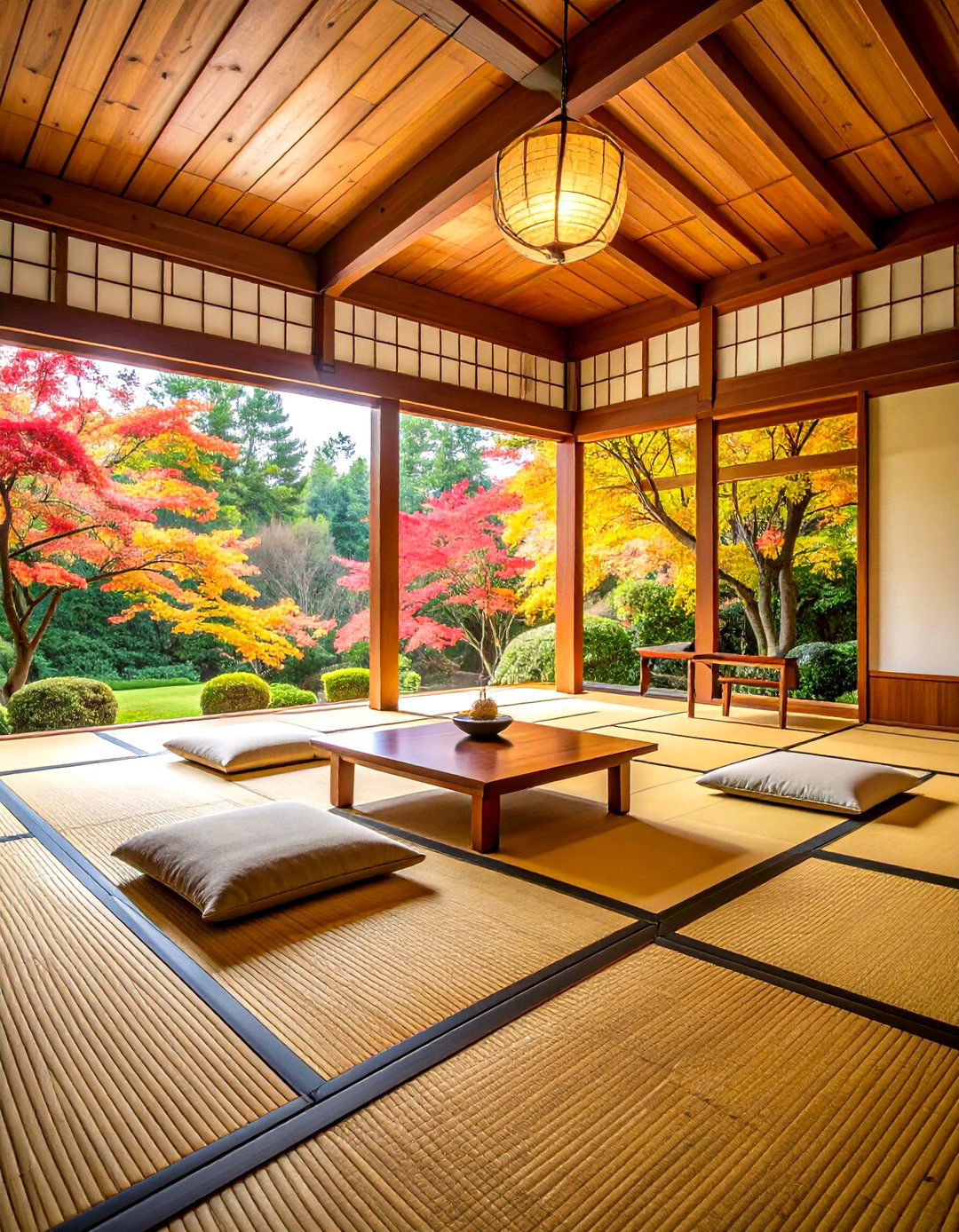
Tatami mats, traditionally crafted from woven straw, bring authenticity and warmth to a Japanese-style living room, serving as flooring, seating, or even a base for low furniture. By using tatami mats, you create a harmonious and organic feel while maintaining functionality, with their natural texture introducing a tactile element that enhances the room's overall aesthetic. Install full tatami flooring or use individual mats to define specific areas within your living room for meditation, reading, or tea ceremony. The use of tatami mats, low tables, and floor cushions encourages sitting on the floor, which is grounding and supports a meditative posture. Incorporating tatami mats into your decor fosters a harmonious environment, reflecting the simplicity and tranquility characteristic of Japanese design. Pair tatami with low furniture and floor cushions to create an authentic Japanese living experience that promotes mindfulness and connection to traditional culture.
12. Aromatherapy Zen Living Room with Essential Oil Diffusion
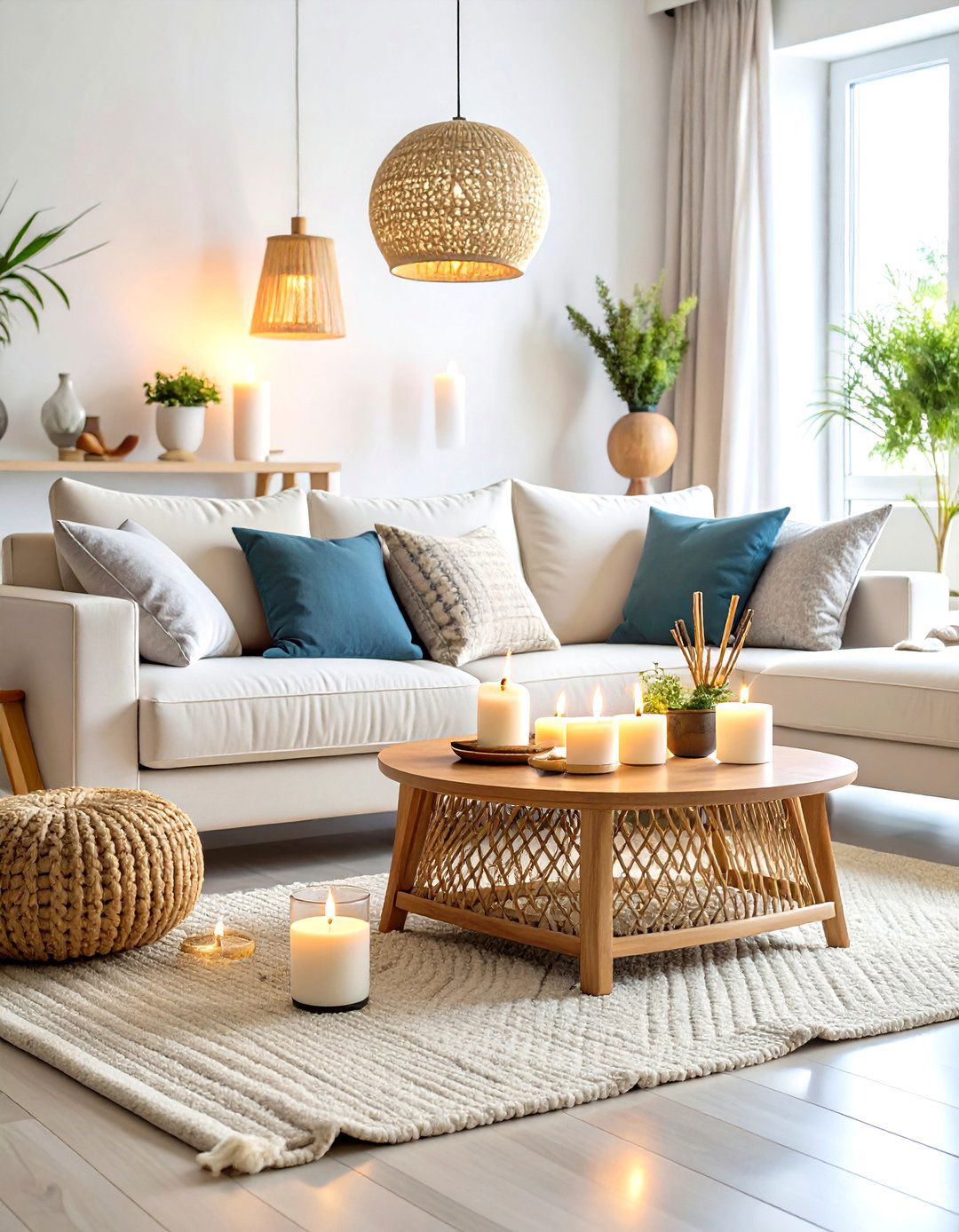
Place them strategically around the room to ensure an even distribution of fragrance and light, with incorporating aromatherapy into your living room decor elevating the overall sense of peace and well-being. Aromatherapy enhances the zen atmosphere by incorporating essential oils, diffusers, scented candles, herb gardens, and natural air fresheners. Install subtle reed diffusers with calming scents like lavender, eucalyptus, or sandalwood throughout your living room to create a consistent aromatic experience. Essential oils with calming properties, like lavender and chamomile, promote stress reduction and relaxation. Add scented candles made from natural soy or beeswax in strategic locations for both fragrance and ambient lighting. Integrating aromatherapy into mindfulness practices like meditation or yoga helps the mind unwind and focus on the present moment. Consider growing herbs like mint or lavender in small pots to provide natural, living aromatherapy.
13. Stone Accent Zen Living Room with Natural Rock Elements
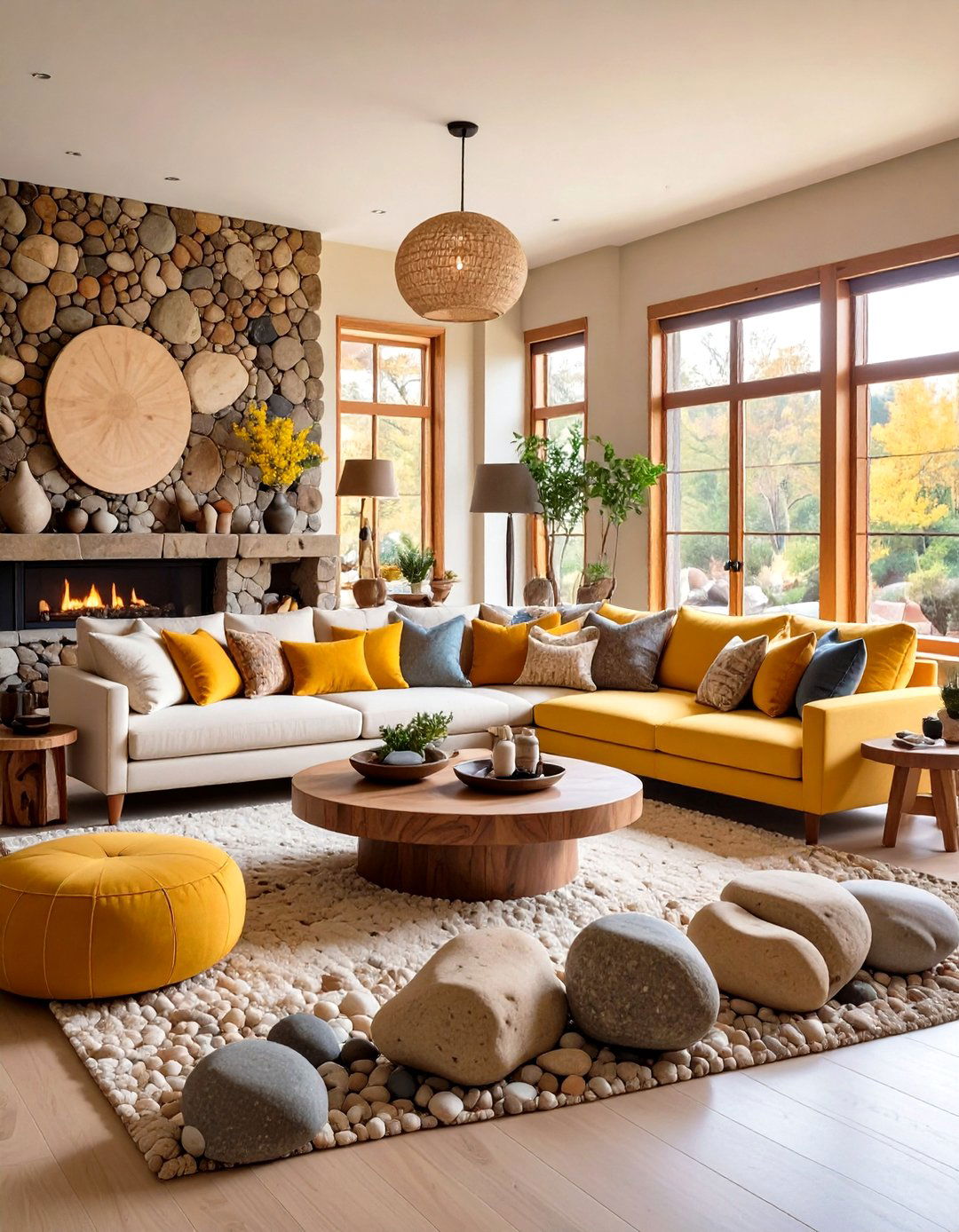
Incorporate natural materials like wood, stone, and bamboo, with stone adding stability and natural materials aligning with zen design principles while creating visual interest. Rocks, crystals, or pebbles can add a natural touch and grounding energy, incorporating nature-inspired elements that promote calmness and connection to the outdoors. Create focal points using carefully selected stones as sculptural elements on coffee tables, shelves, or dedicated display areas. For a smooth and organic style, natural stone tiles made of river rocks or smooth pebbles, polished stones like slate or travertine that exude an elegant and soothing aesthetic look best. Include larger statement stones as natural sculptures or use smaller river rocks in decorative bowls to add texture and grounding energy. Individual elements hold deep symbolic meaning, with larger rocks suggesting islands, mountains, animals, or natural elements such as fire and earth. The varied textures and natural patterns of stone create visual interest while maintaining the peaceful, organic atmosphere essential to zen design.
14. White Monochrome Zen Living Room with Pure Simplicity
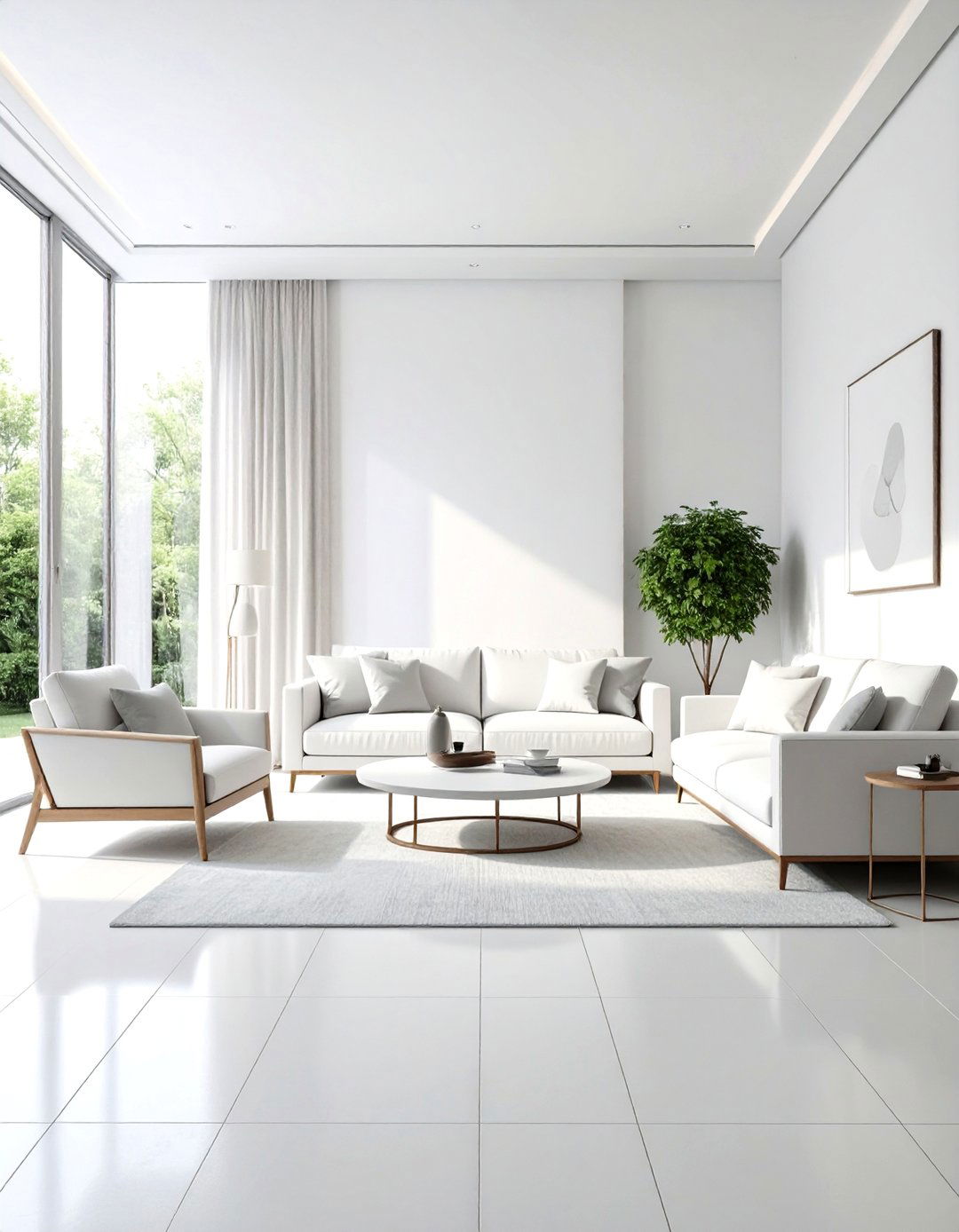
A serene white sanctuary embodies zen living room ideas through its use of a monochromatic white palette that evokes purity and calmness. The all-white decor aids in dispersing natural light throughout the space, enhancing a sense of peace and space. Create layers of white and off-white tones through furniture, textiles, and wall treatments to add depth without compromising the serene atmosphere. Many contemporary zen styles tend to veer towards the classic white or black, and these two shades are extremely easy to work with while building the foundation of any zen interior design. Soft, plush textiles like cushions and throws add comfort without disturbing the color theme, while accents in soft grays or muted metallics add slight contrast while keeping the look cohesive. Include white or cream furniture with clean lines, complemented by natural wood accents to prevent the space from feeling stark while maintaining the pure, peaceful aesthetic.
15. Tea Ceremony Zen Living Room with Mindful Gathering Space
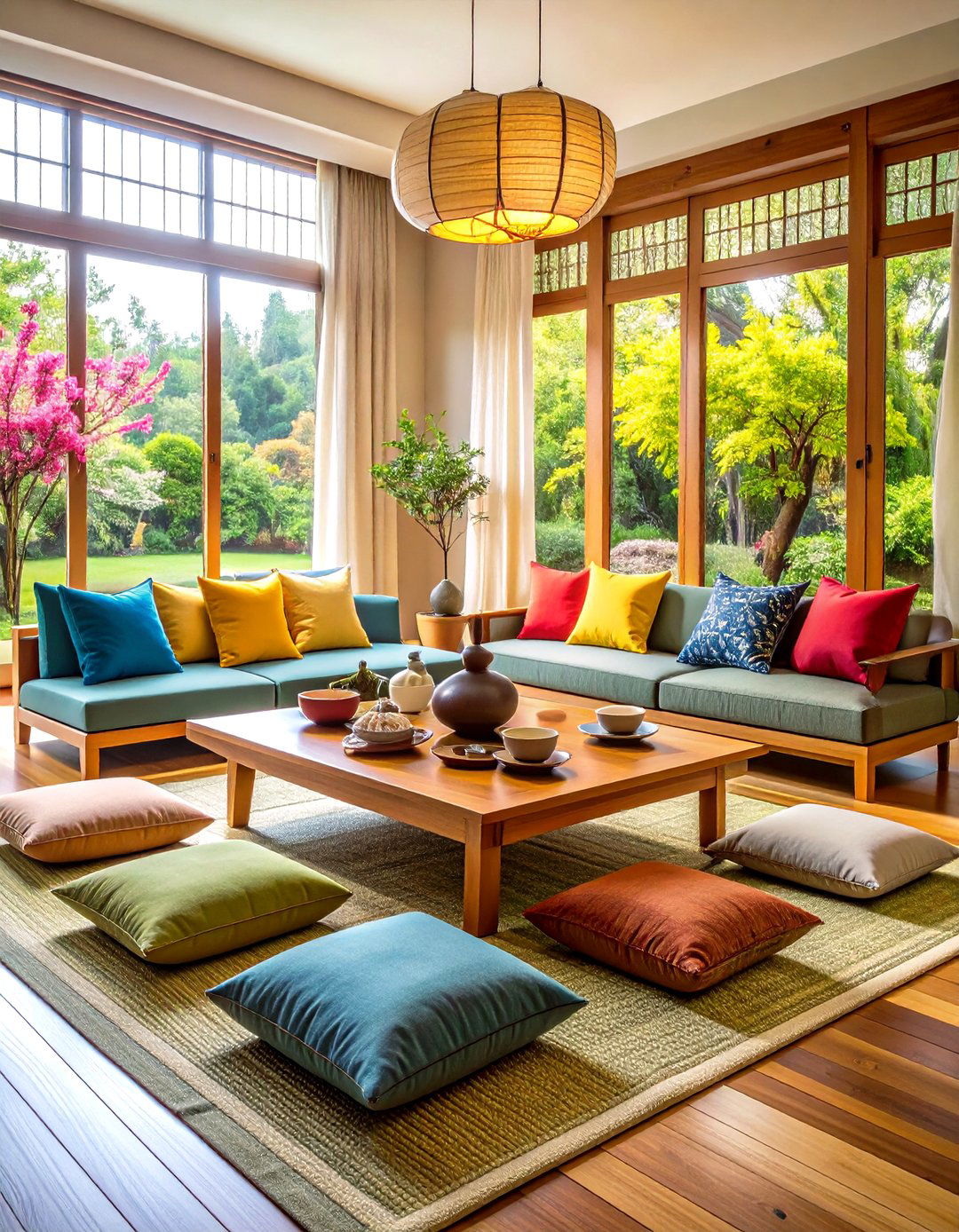
Designing a living room around the concept of a Japanese tea ceremony room can infuse your space with zen living room ideas that focus on tradition and mindfulness. The use of tatami mats, low tables, and floor cushions encourages sitting on the floor, which is grounding and supports a meditative posture. Create a dedicated area with a low tea table surrounded by comfortable floor cushions or zabuton meditation cushions for authentic tea service. Natural wood elements and sliding shoji screens can help compartmentalize the space without creating a feeling of confinement. Include traditional tea ceremony accessories like a ceramic tea set, bamboo whisk, and small serving dishes displayed on simple wooden shelves. Add subtle Japanese artwork or calligraphy to enhance the cultural authenticity while maintaining the clean, minimalist aesthetic. This dedicated space encourages mindful moments and social connection through the meditative practice of tea preparation and consumption.
16. Meditation Corner Zen Living Room with Quiet Reflection Space
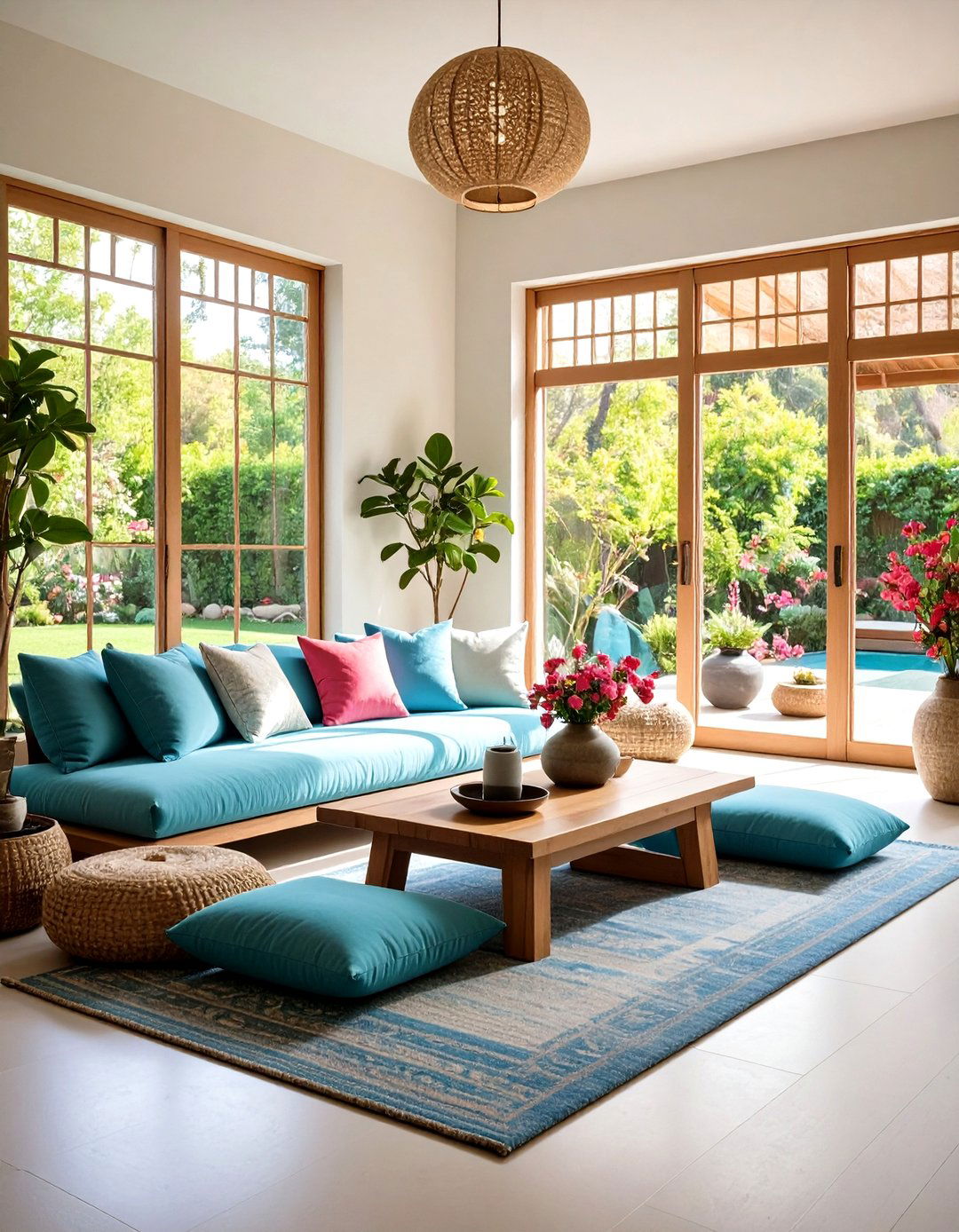
A quiet space for reflection is designed as a tranquil area within a living room where one can meditate, read, or simply relax. Soft, cushioned seating and minimal decor ensure the focus remains on personal peace and relaxation. Designate a specific corner with a comfortable meditation cushion or small bench, positioned near a window for natural light or facing a peaceful view. Subdued colors and soft lighting enhance the reflective quality of the space, making it ideal for introspection and emphasizing the importance of having a personal sanctuary. Include minimal accessories like a small side table for books or journals, a soft throw blanket for comfort, and perhaps a small plant or stone for natural grounding. Keep distractions to an absolute minimum, with objects that don't directly aid your focus left in other areas of your home. This sacred space within your living room provides daily opportunities for mindfulness and self-reflection.
17. Symmetrical Balance Zen Living Room with Harmonious Arrangement
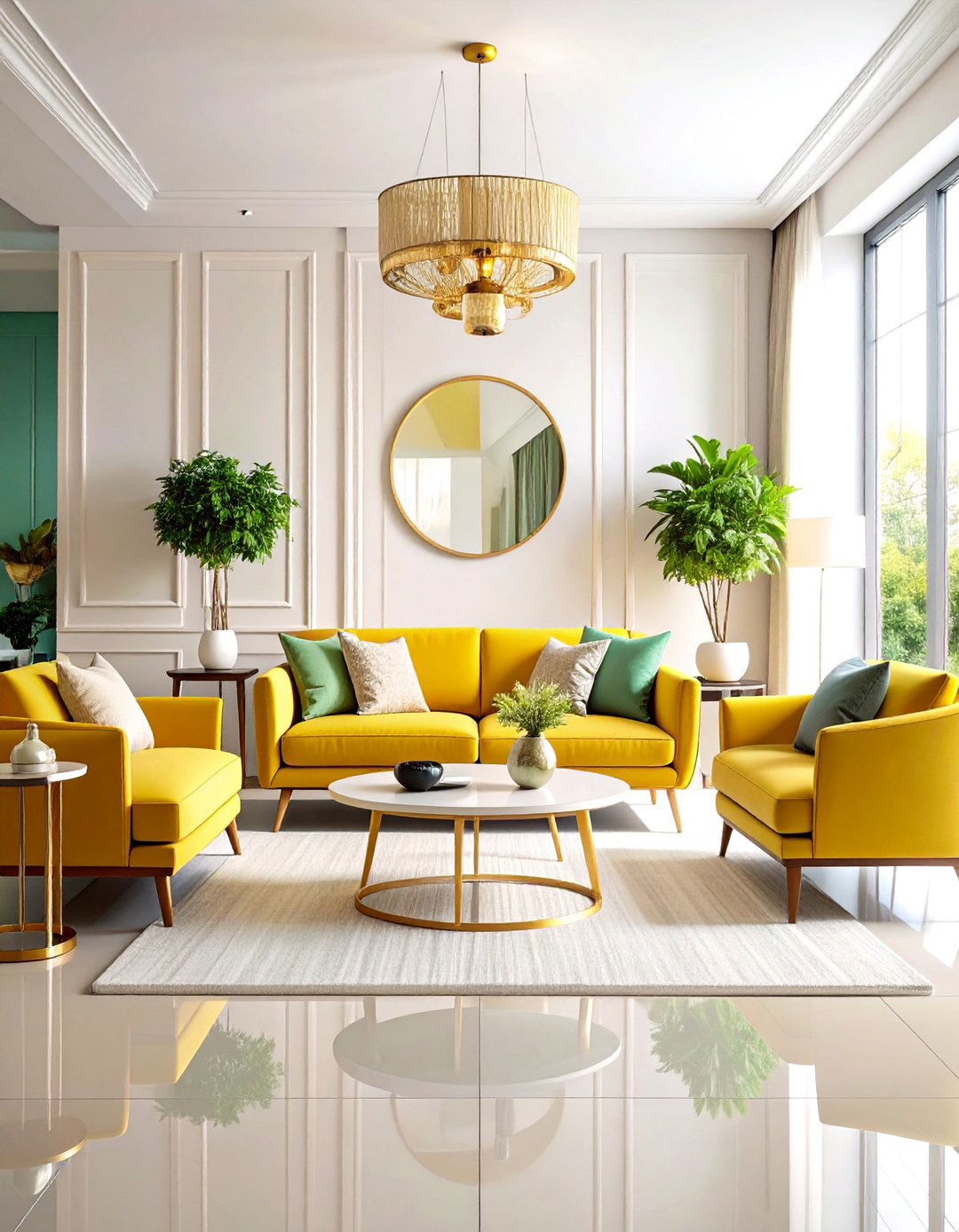
Furniture and decor are carefully placed to mirror each other, enhancing the room's sense of equilibrium—an essential feature in zen living room ideas. The use of symmetric design helps to subdue visual clutter, allowing the mind to relax. Arrange furniture in balanced pairs, such as matching side tables flanking a sofa, identical floor lamps on either side of a room, or symmetrical plant placements to create visual harmony. The design pays careful attention to balance and symmetry, drawing inspiration from Eastern philosophies like feng shui with thoughtful placement of furniture and decor. Choose artwork and accessories that complement each other in size, color, and style to maintain the balanced aesthetic. Colors are kept neutral and soothing, with textures that add depth without disrupting the harmonious feel. This symmetrical approach creates a sense of order and calm that supports relaxation and mental clarity.
18. Natural Light Zen Living Room with Maximum Brightness
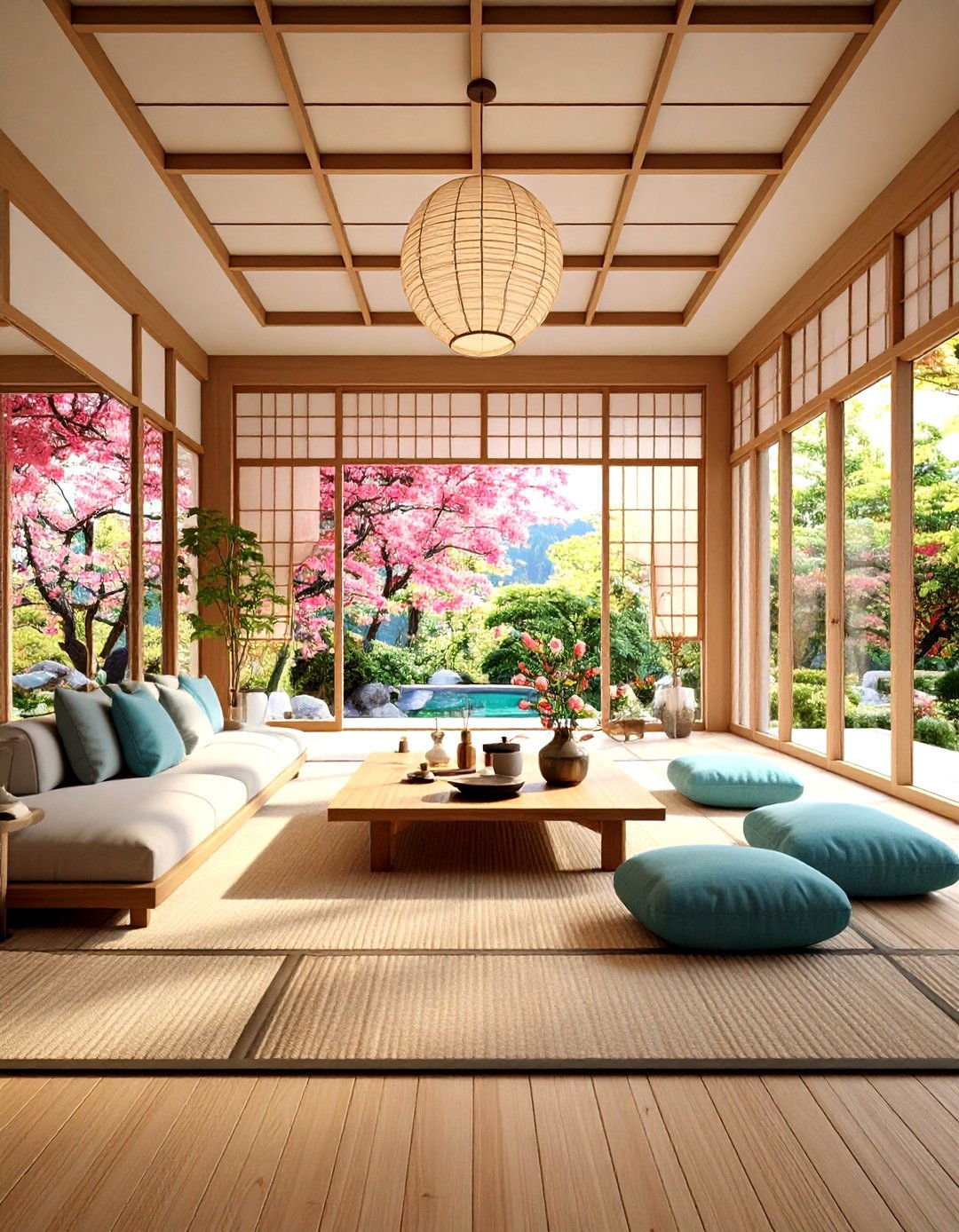
A light and airy zen room maximizes the use of natural light to create a bright, soothing atmosphere that is uplifting yet calm. The soft glow of natural light enhances the textures and colors of wood, tatami, and other natural materials. Remove heavy curtains and replace them with sheer panels or bamboo blinds that filter light softly while maintaining privacy. Allow natural light to stream into your space as much as possible, making sure not to block windows with furniture or decor and using sheer, gauzy curtains that let in maximum light. Position mirrors strategically to reflect and amplify natural light throughout the room, creating a brighter, more spacious feeling. By maximizing natural lighting, you not only reduce energy consumption but also create a calming environment that aligns with Japanese principles of harmony and balance. Keep window areas clear of large furniture to allow light to flow freely into the space.
19. Textural Zen Living Room with Soft Natural Fabrics
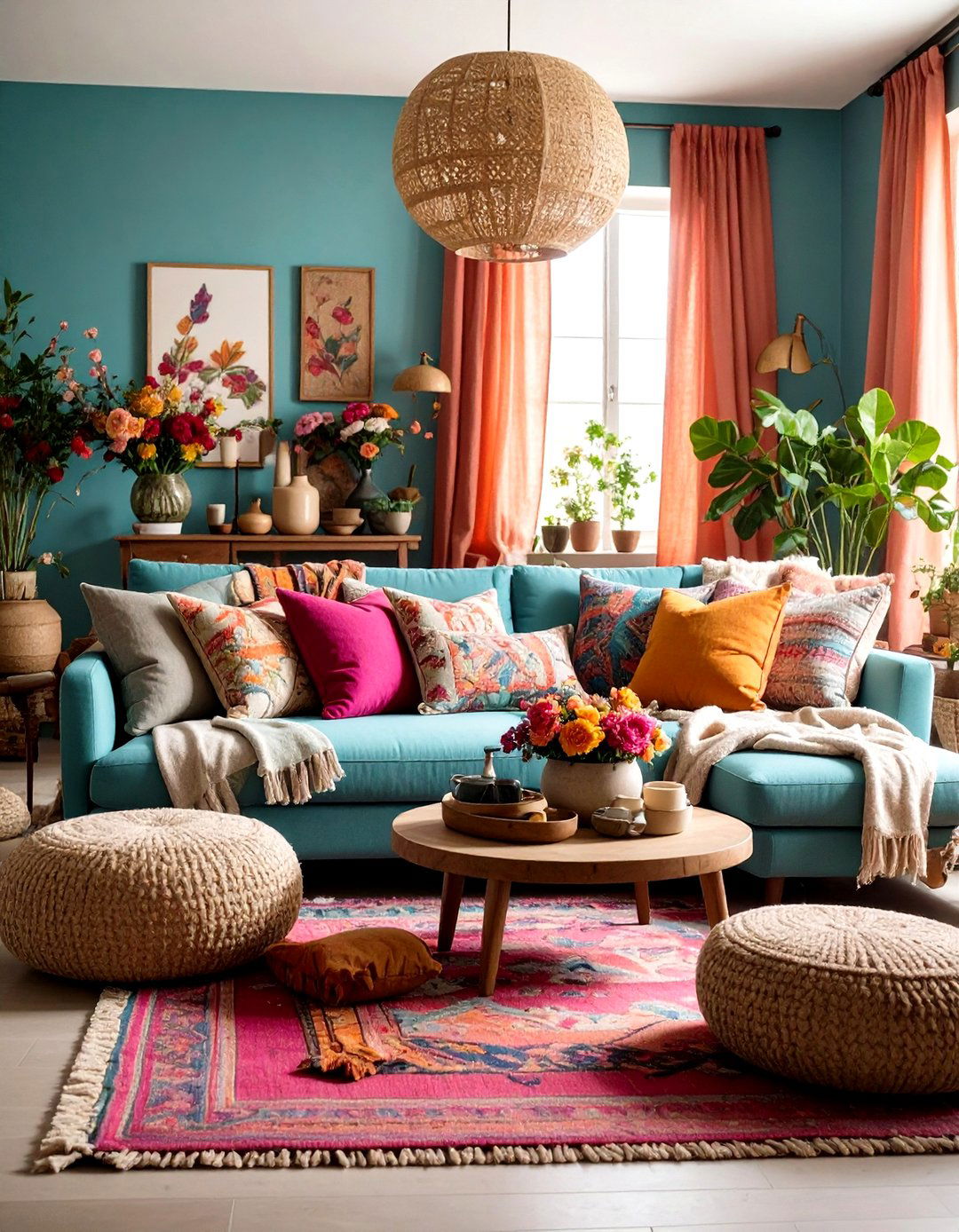
Soft textiles provide a comfortable and soothing atmosphere in a zen room, contributing to the tactile experience and promoting a sense of coziness and relaxation. Drape soft blankets or throws over sofas or chairs for warmth and comfort, arrange floor cushions or oversized pillows for additional seating. Layer different natural textures through linen cushions, cotton throws, jute rugs, and wool blankets to create visual and tactile interest while maintaining the peaceful aesthetic. Incorporate materials like bamboo, linen, and wood to add visual interest and create a tactile experience, with these organic textures contributing to a sense of calm and relaxation. Use upholstered furniture with soft and comfortable fabrics, and organic cotton for bedding and other textiles. Choose fabrics in neutral tones with subtle patterns or solid colors to maintain visual harmony while adding comfort and warmth to your zen living room sanctuary.
20. Sound Therapy Zen Living Room with Calming Audio Elements
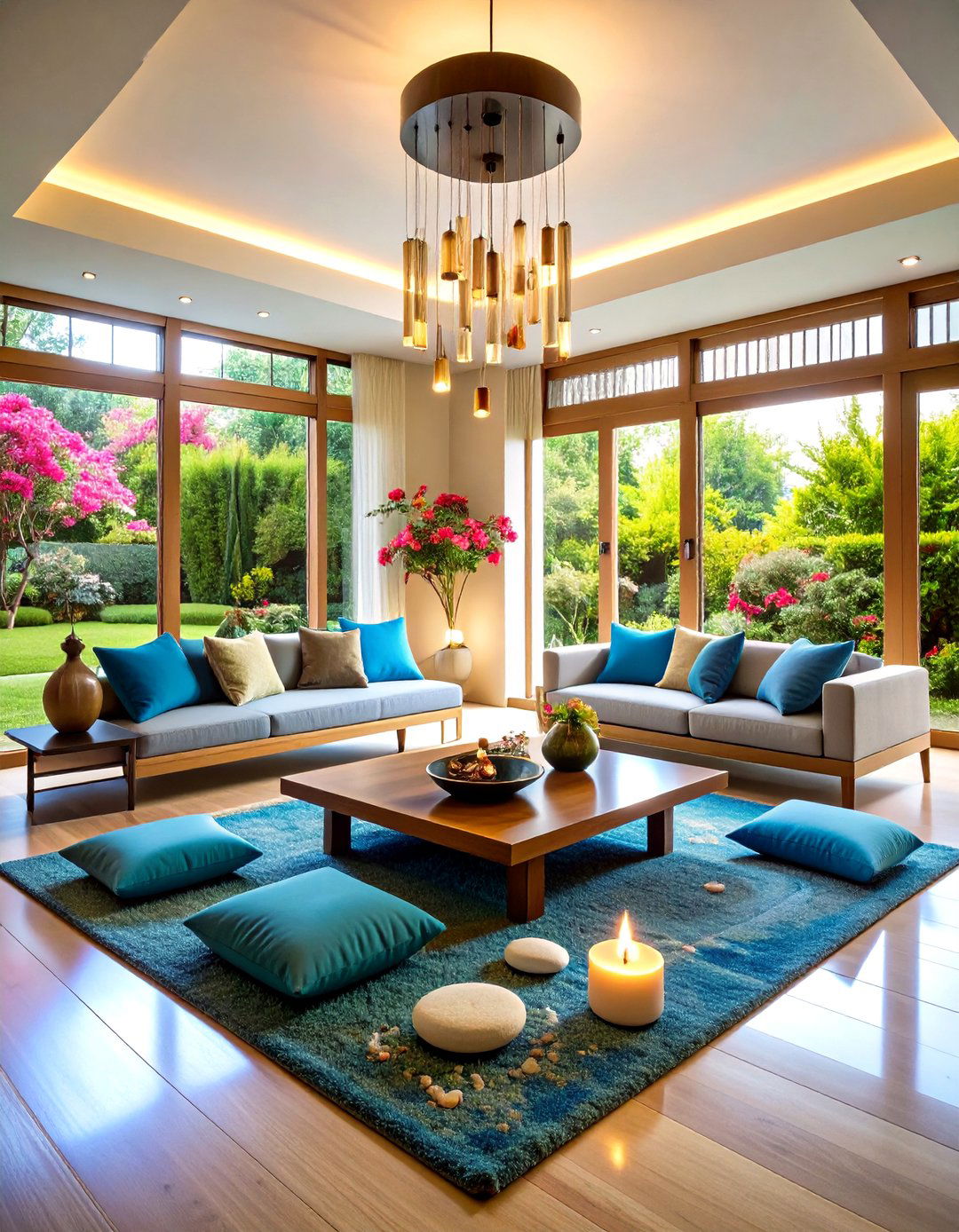
Sound plays a crucial role in creating a zen atmosphere, with adding elements like wind chimes, a small water fountain, or a sound machine with nature sounds significantly enhancing the tranquility. The gentle tinkling of wind chimes, the soothing flow of water, or the calming sounds of birds and rain can help create a peaceful and serene environment. Install small indoor wind chimes near windows or doorways to catch gentle breezes, creating soft, natural sounds throughout the day. Use ambient sounds like trickling water to drown out distracting noise. Include a small sound system that plays nature sounds, meditation music, or white noise to mask urban sounds and create a consistent peaceful atmosphere. These auditory elements promote relaxation and mindfulness, making your living room a perfect retreat from the hustle and bustle of daily life. Position speakers discretely to maintain the minimalist aesthetic while ensuring even sound distribution throughout the space.
Conclusion:
Transforming your living room into a zen sanctuary requires thoughtful attention to simplicity, natural elements, and mindful design choices. Creating a zen living room involves combining simplicity, natural elements, and thoughtful design to promote relaxation and tranquility. From minimalist furniture and bamboo accents to water features and meditation corners, each element contributes to a harmonious environment that nurtures peace and well-being. Start with a few key elements and build from there, creating a space that reflects your desire for peace and harmony. By incorporating these zen living room ideas, you create more than just a beautiful space—you establish a daily retreat that supports mindfulness, reduces stress, and enhances your overall quality of life through intentional, peaceful design.



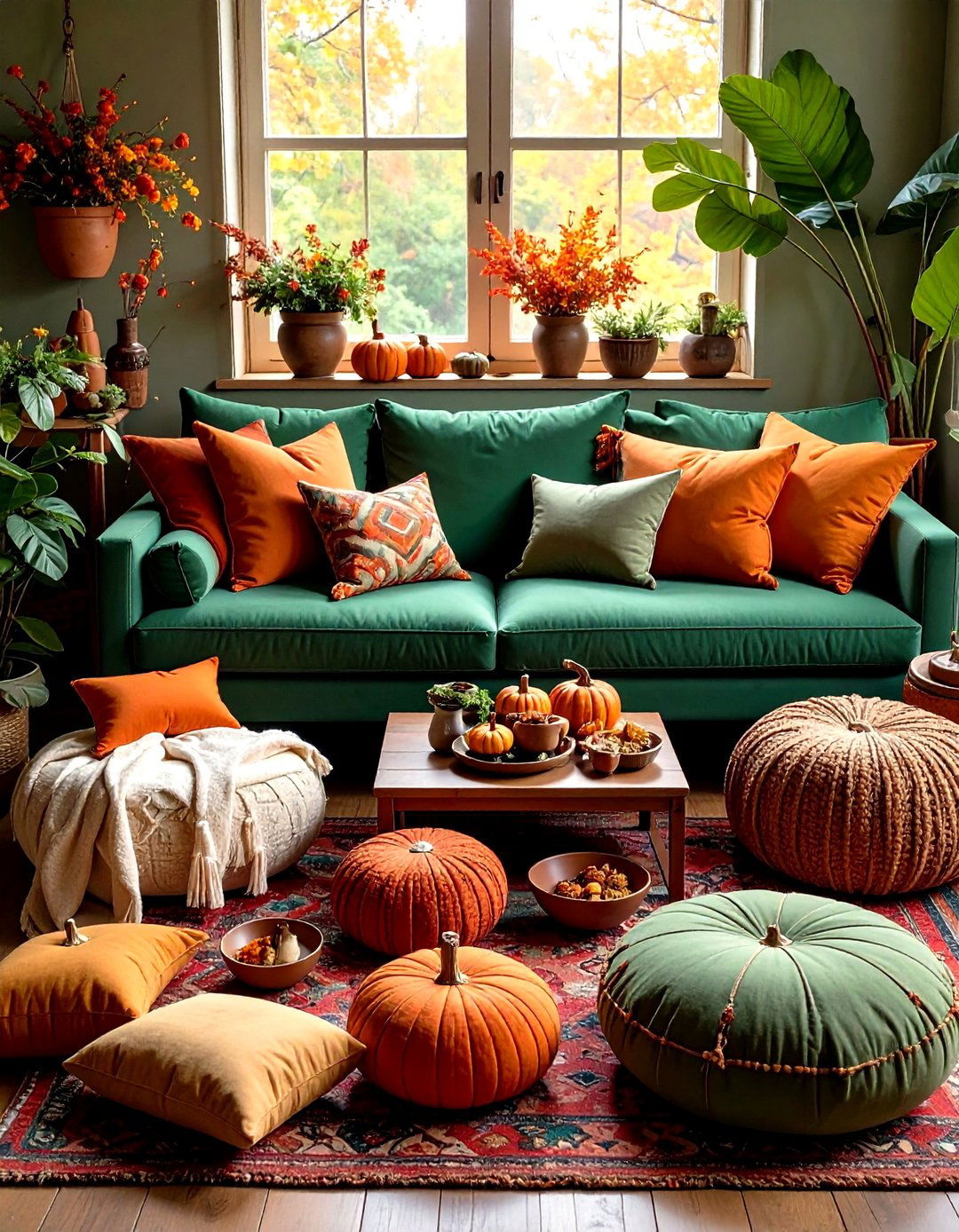
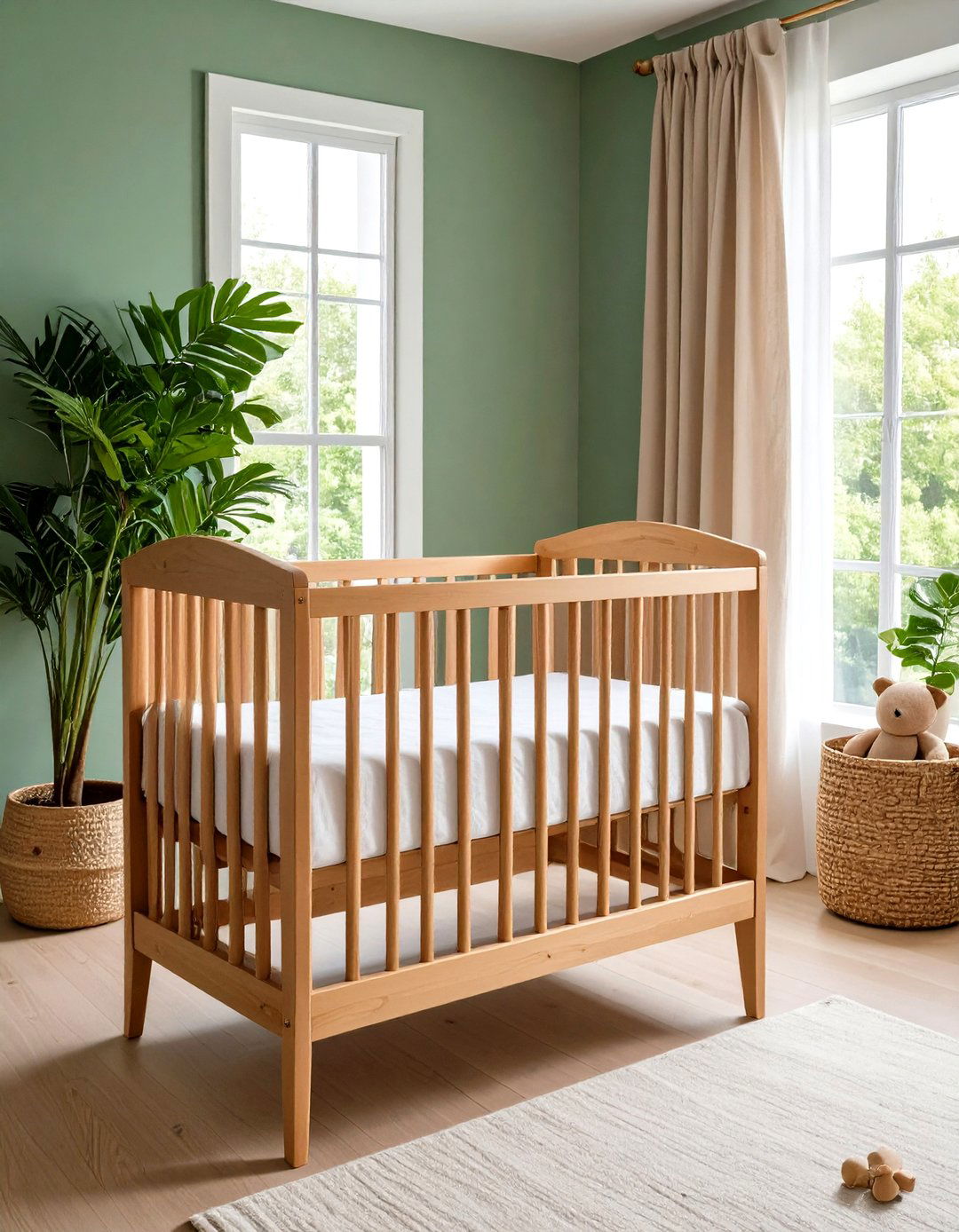
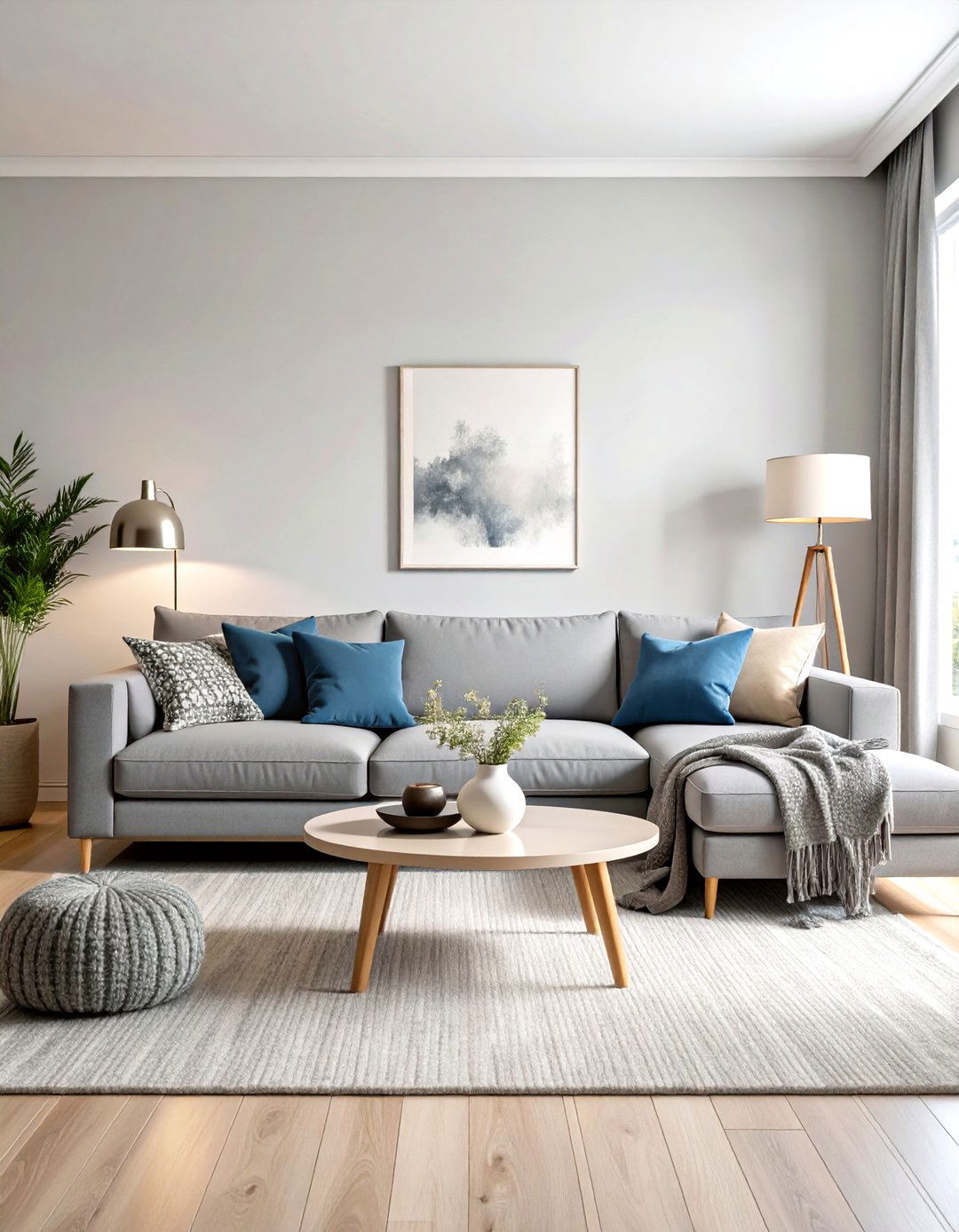
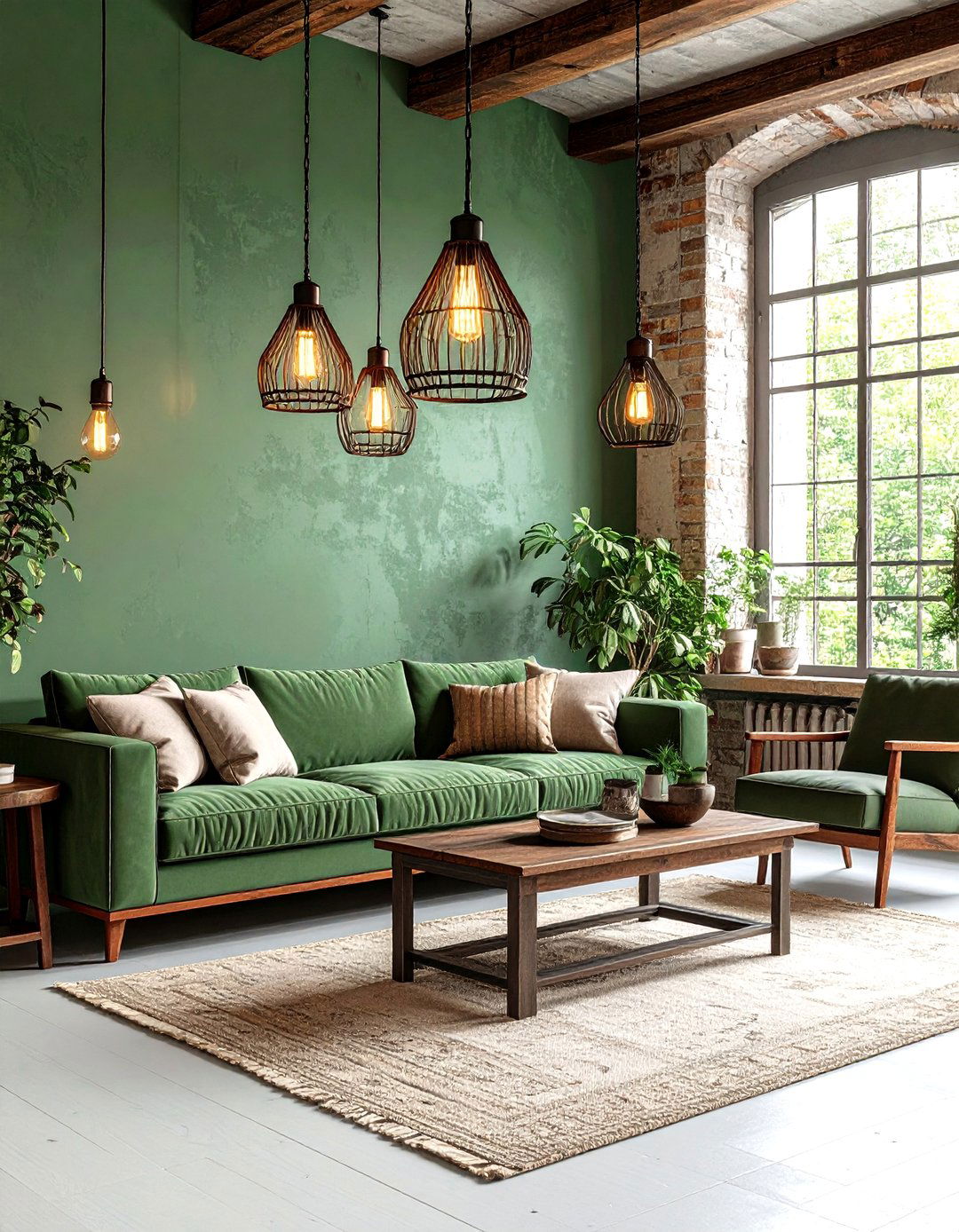
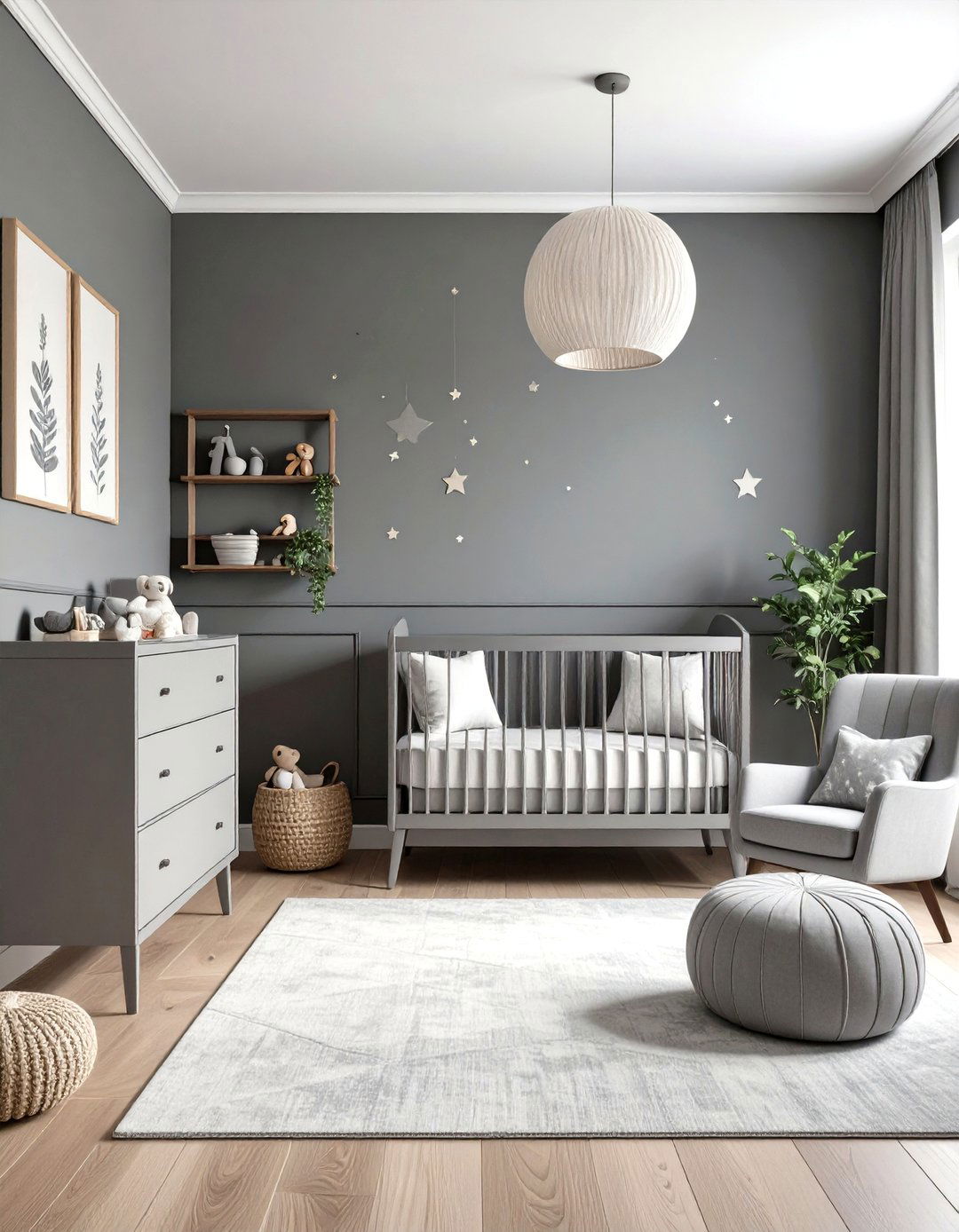
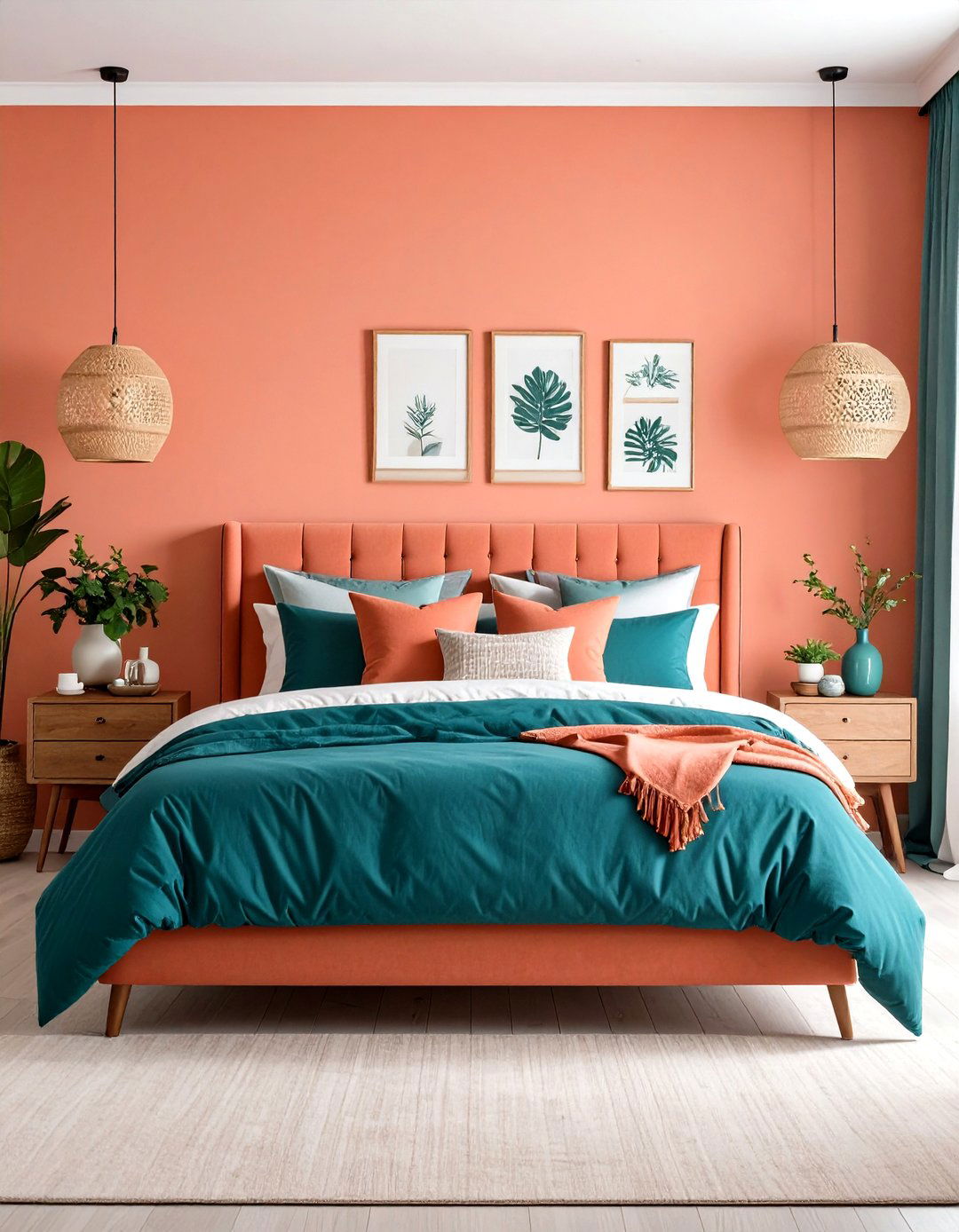
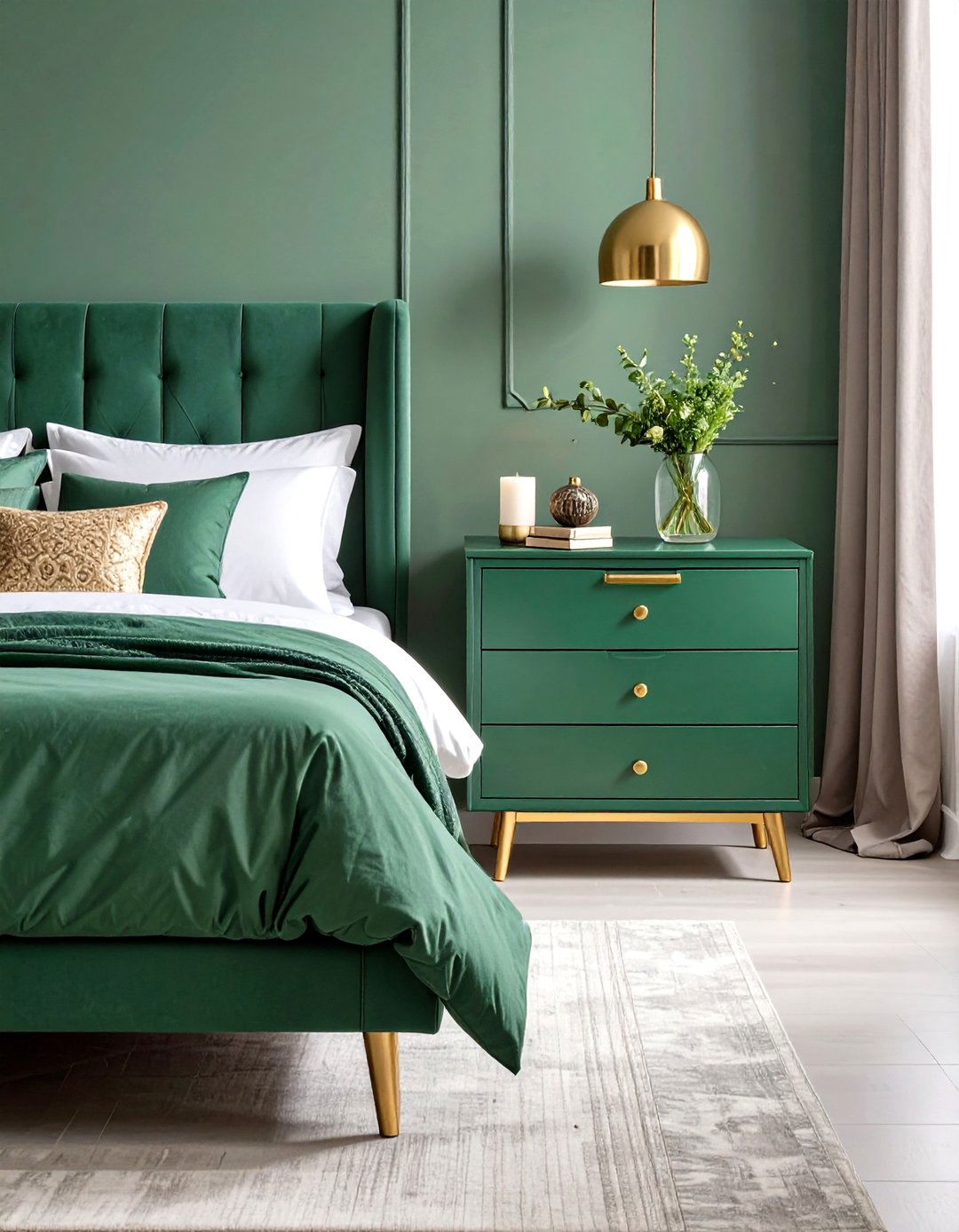
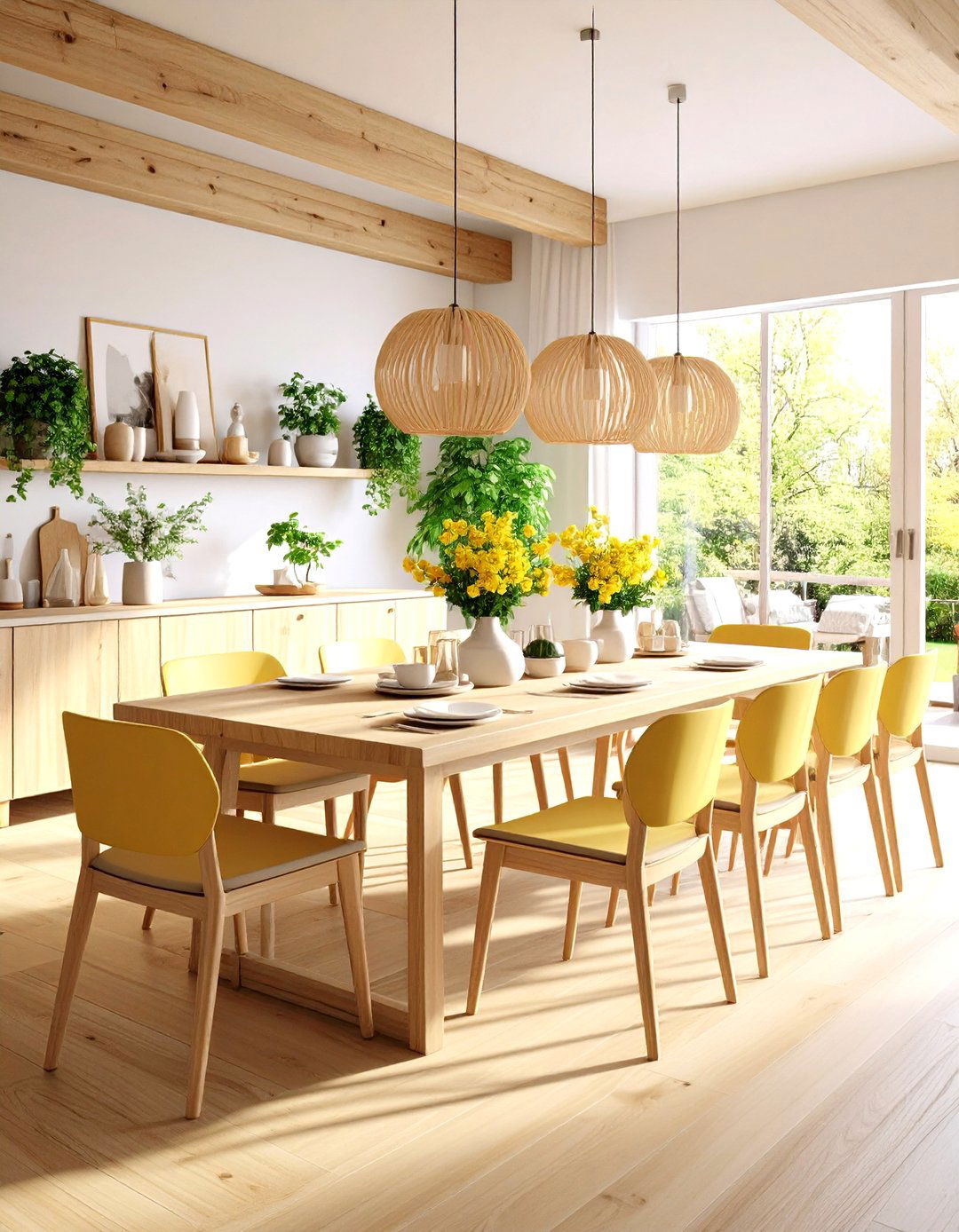
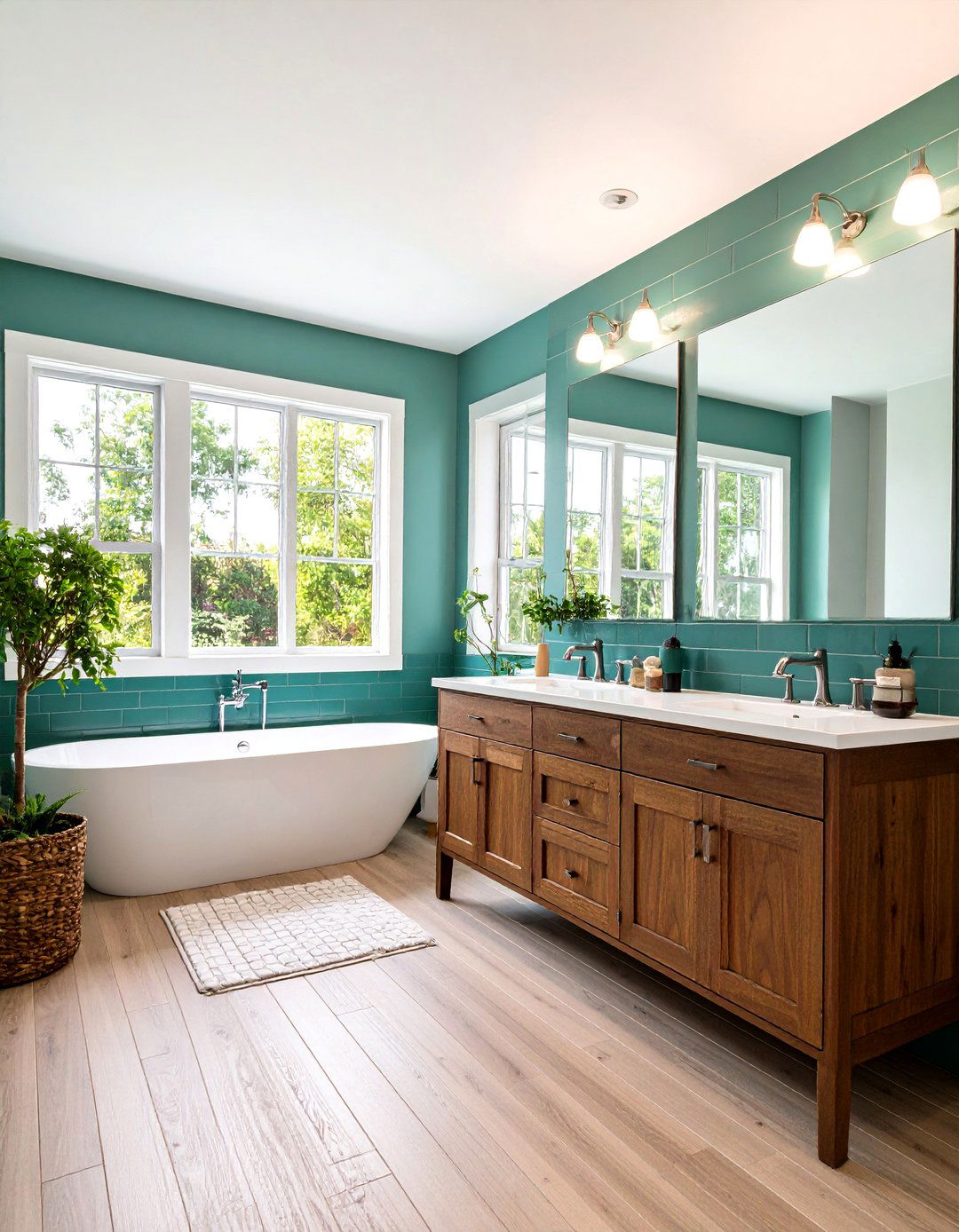

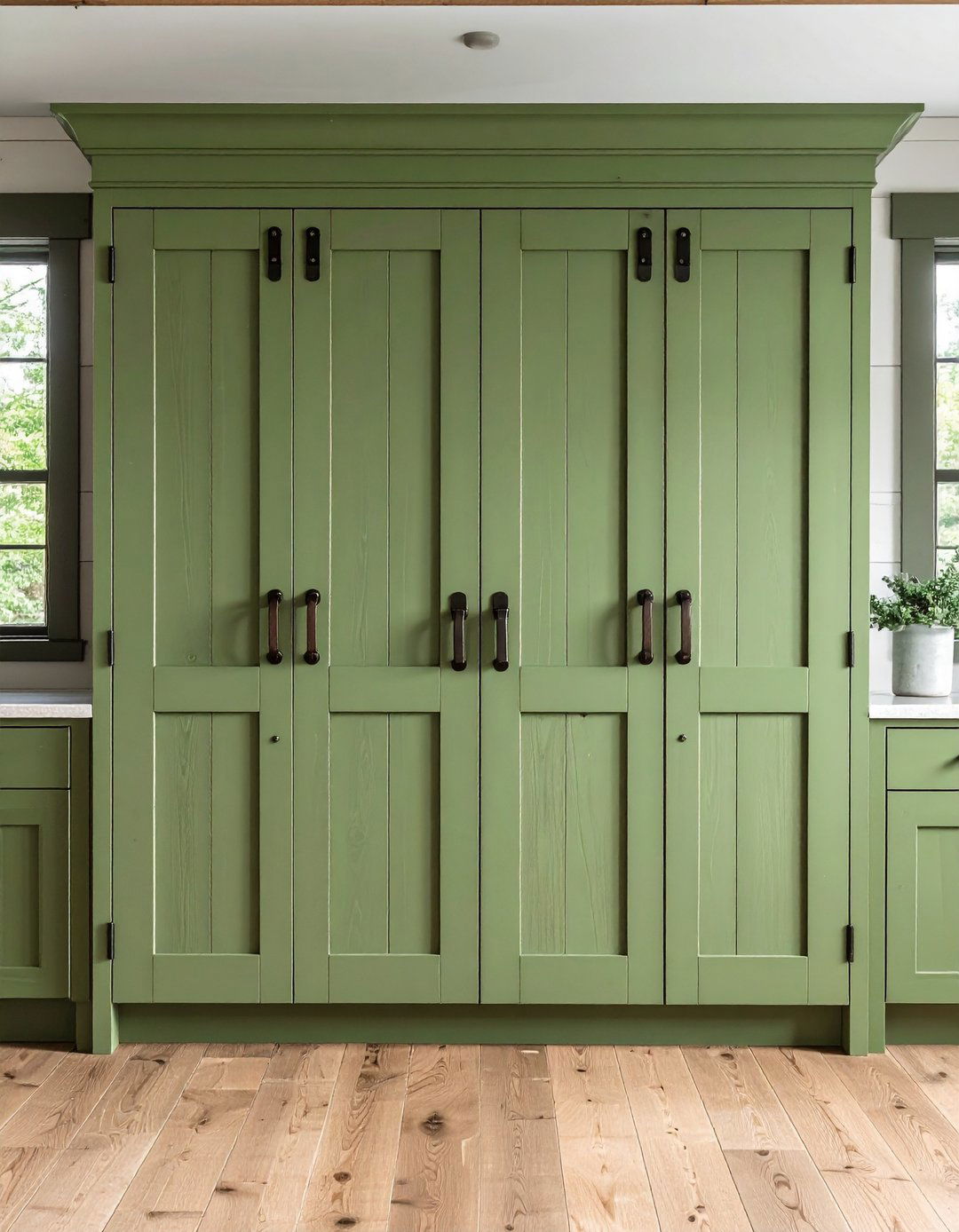
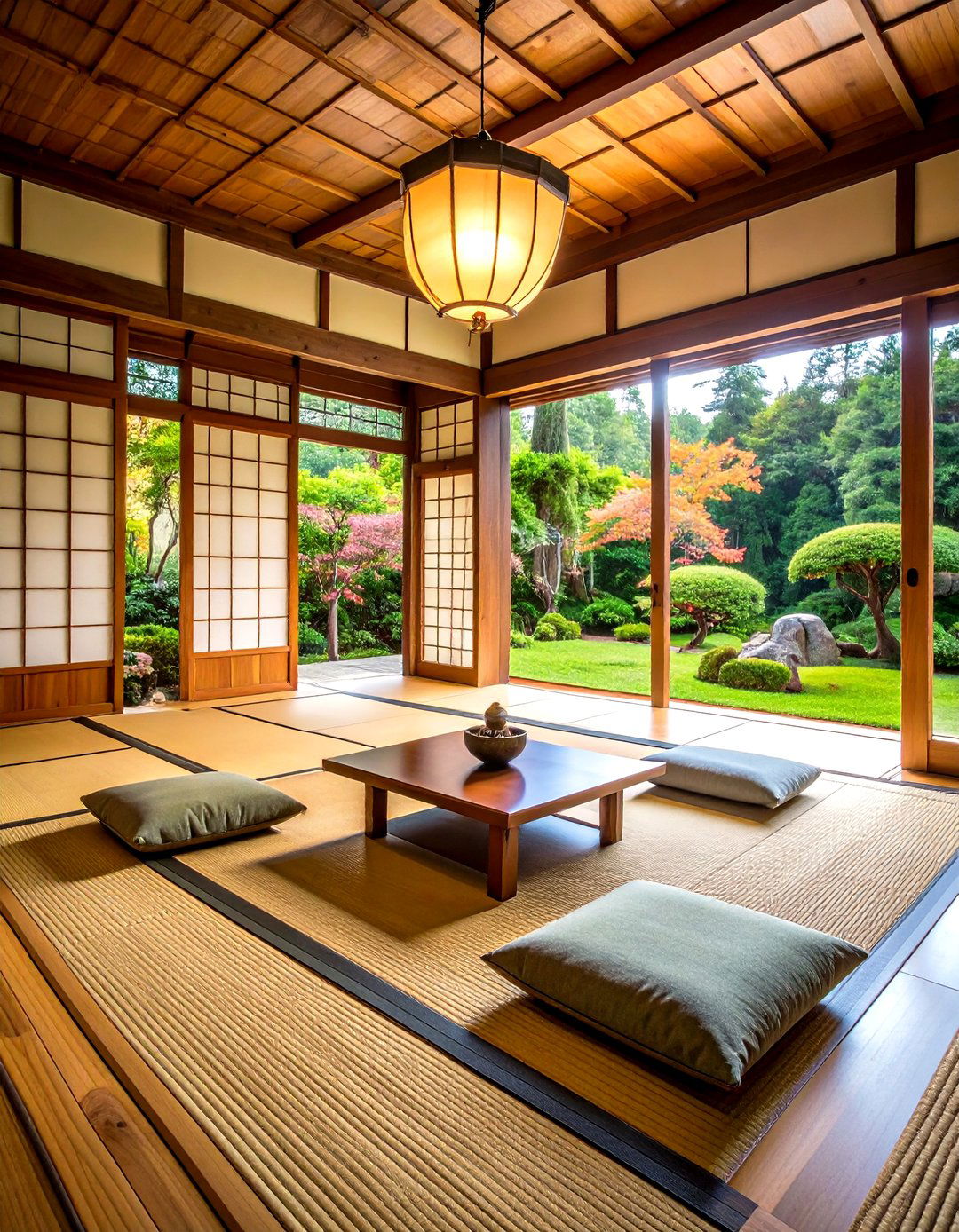
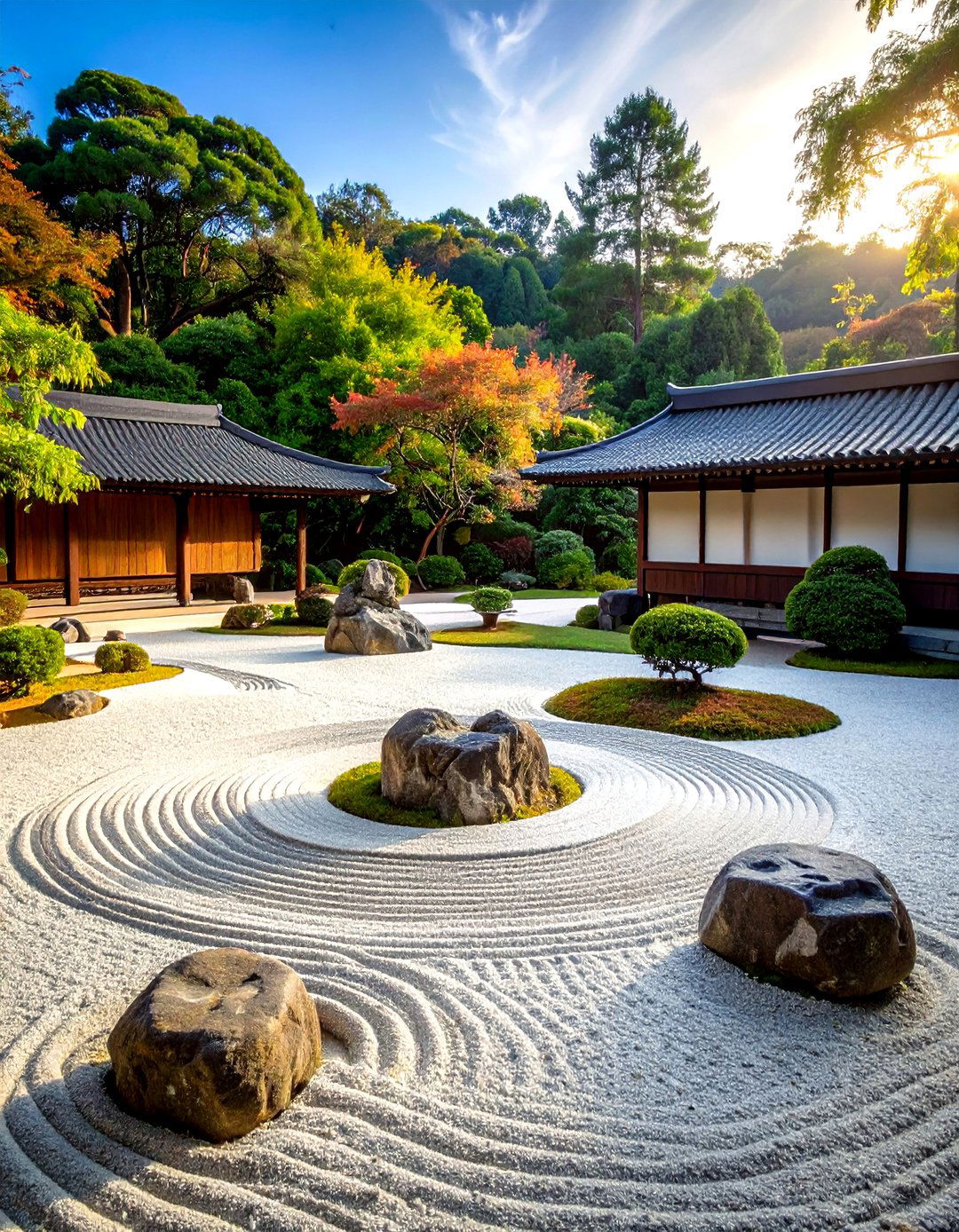
Leave a Reply